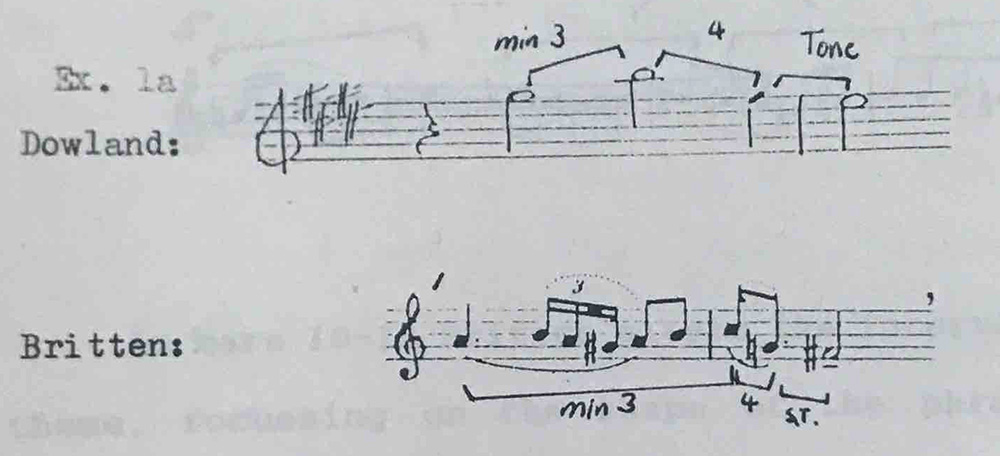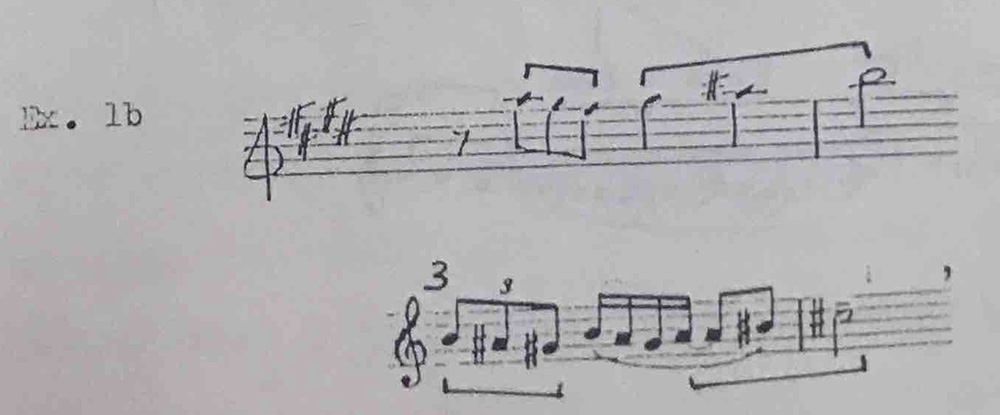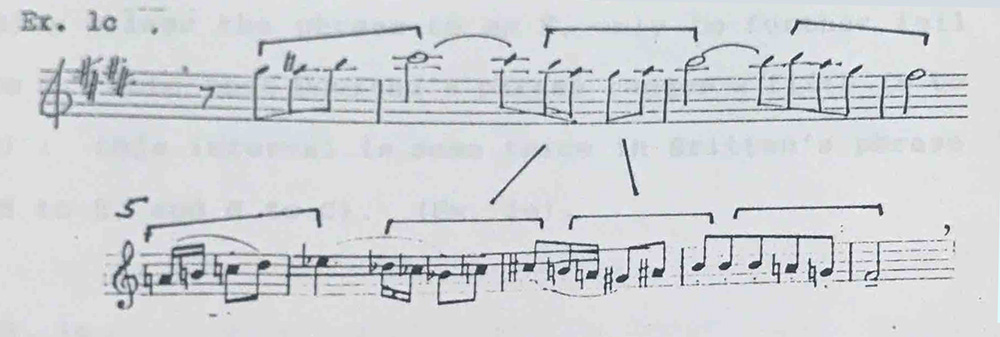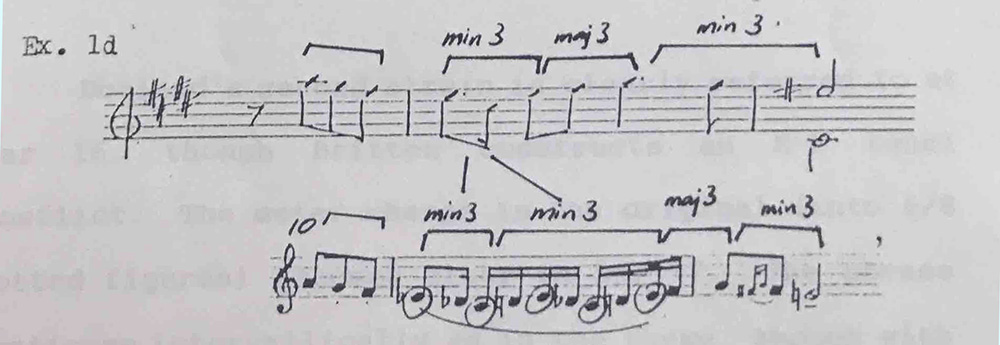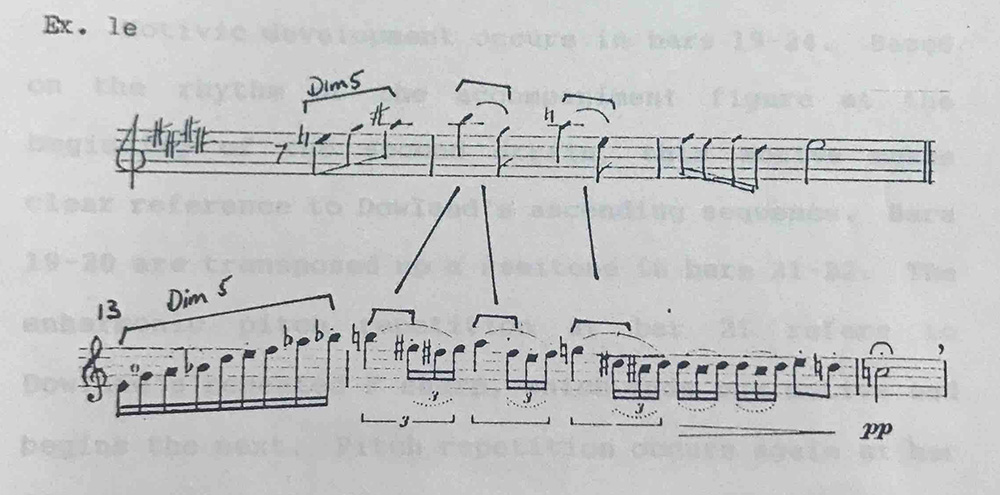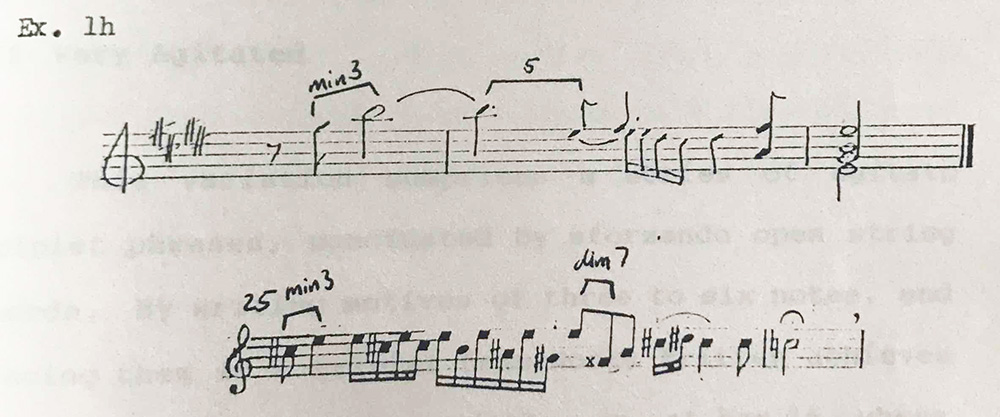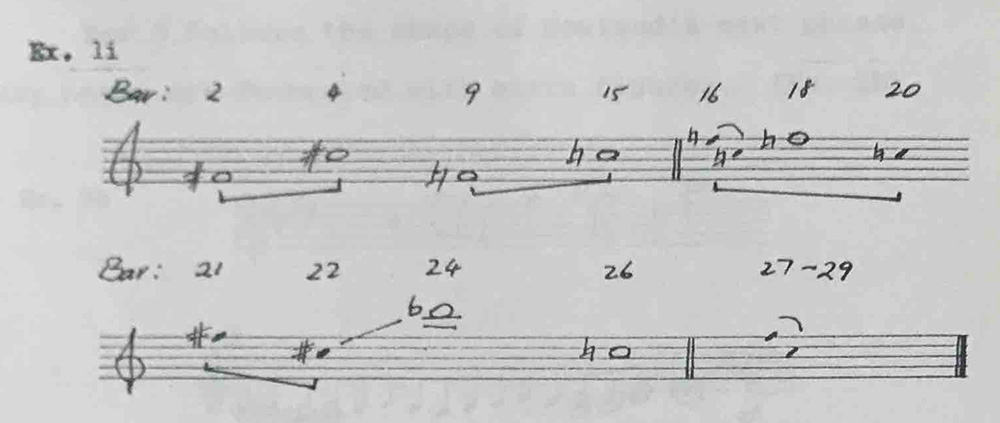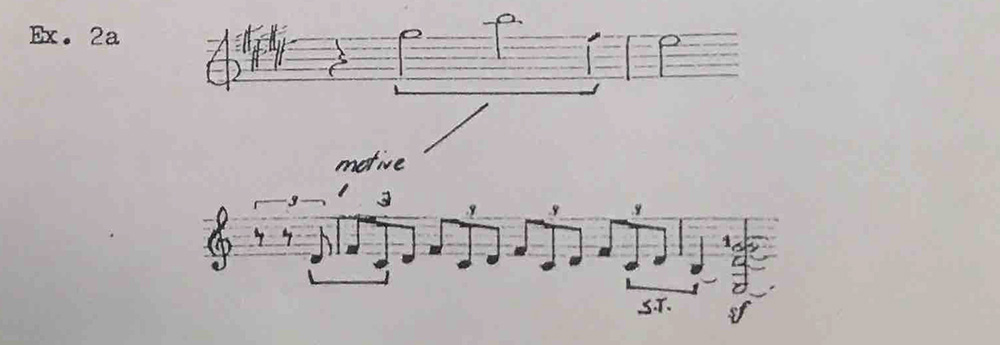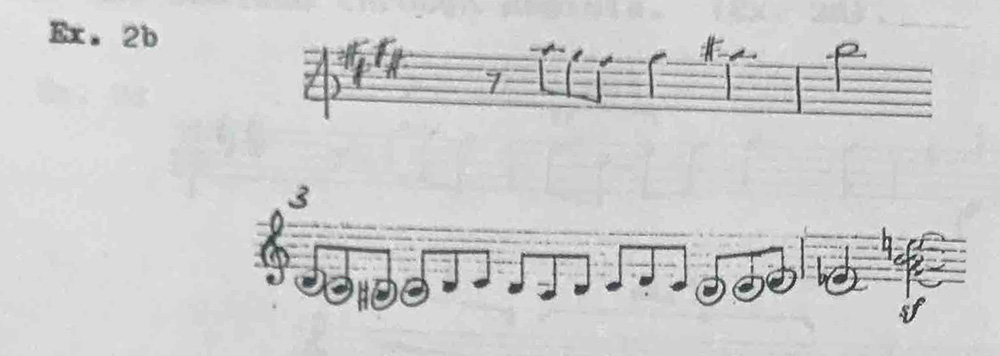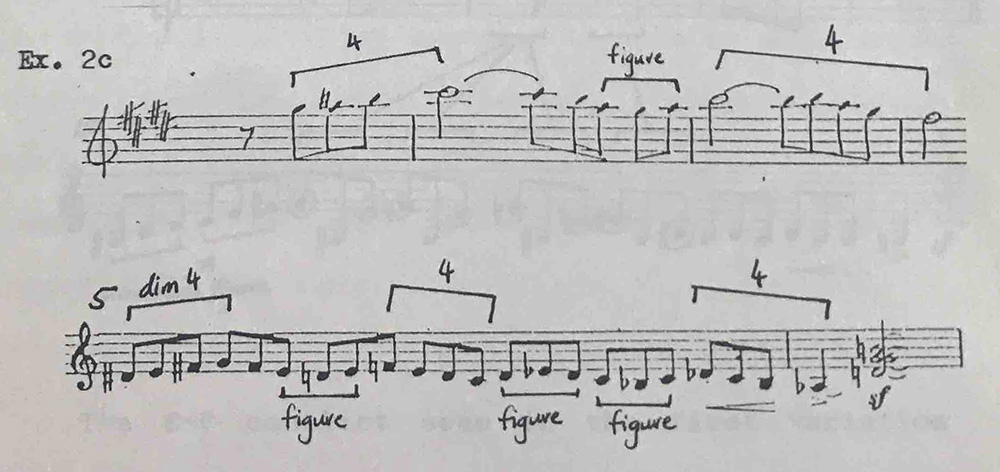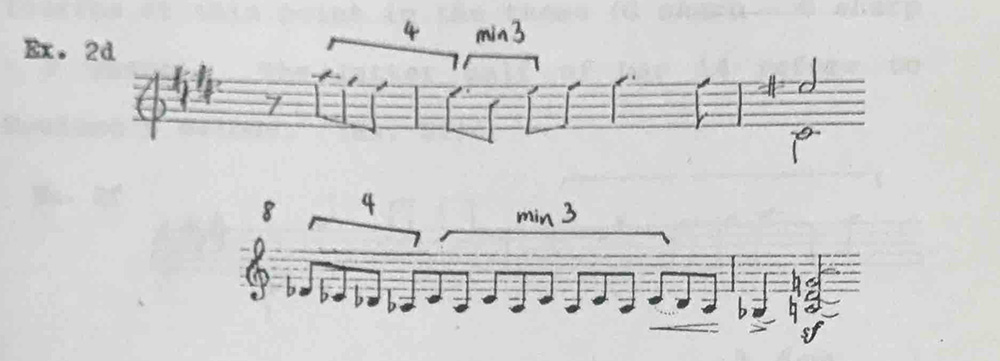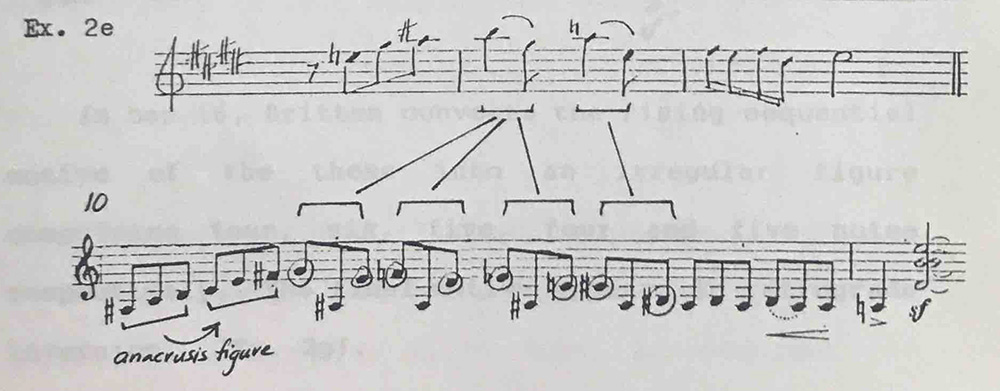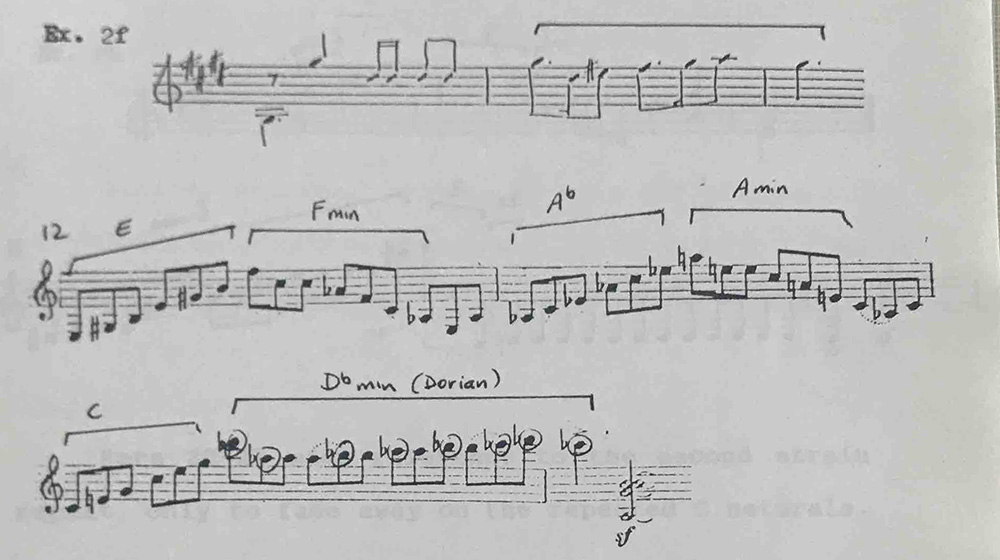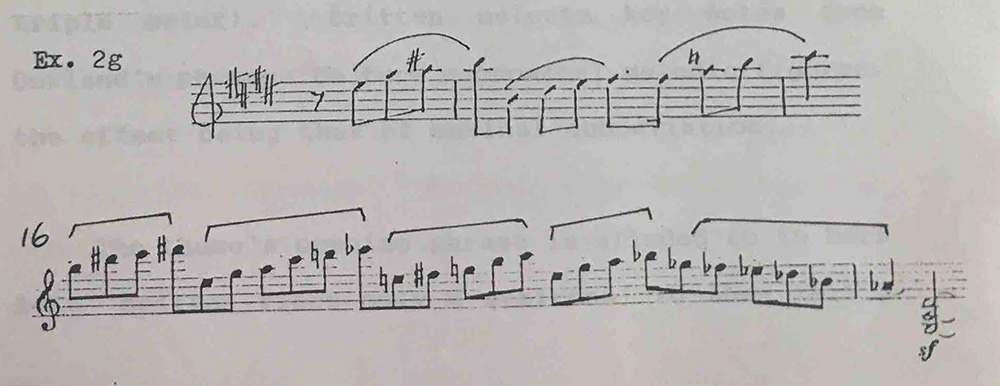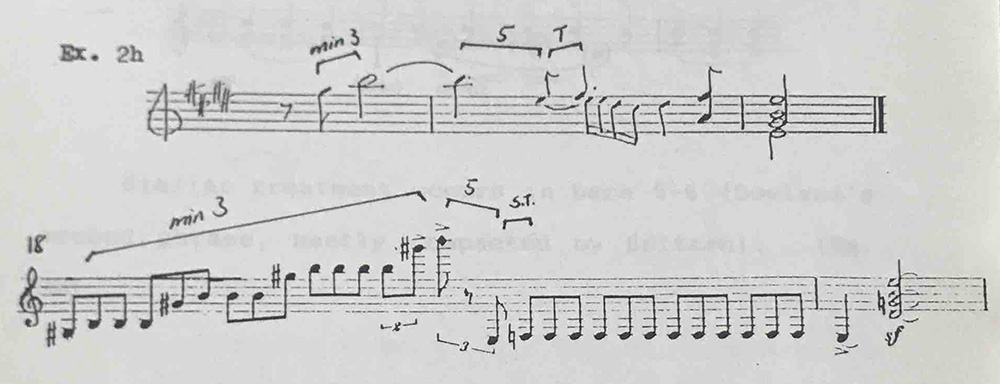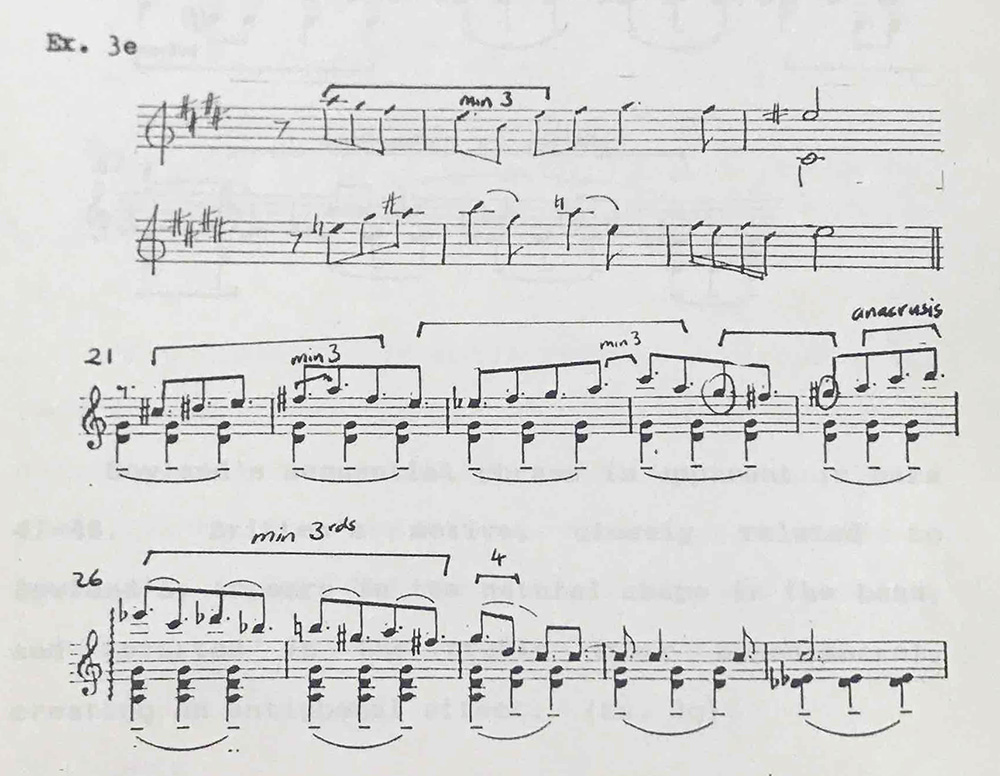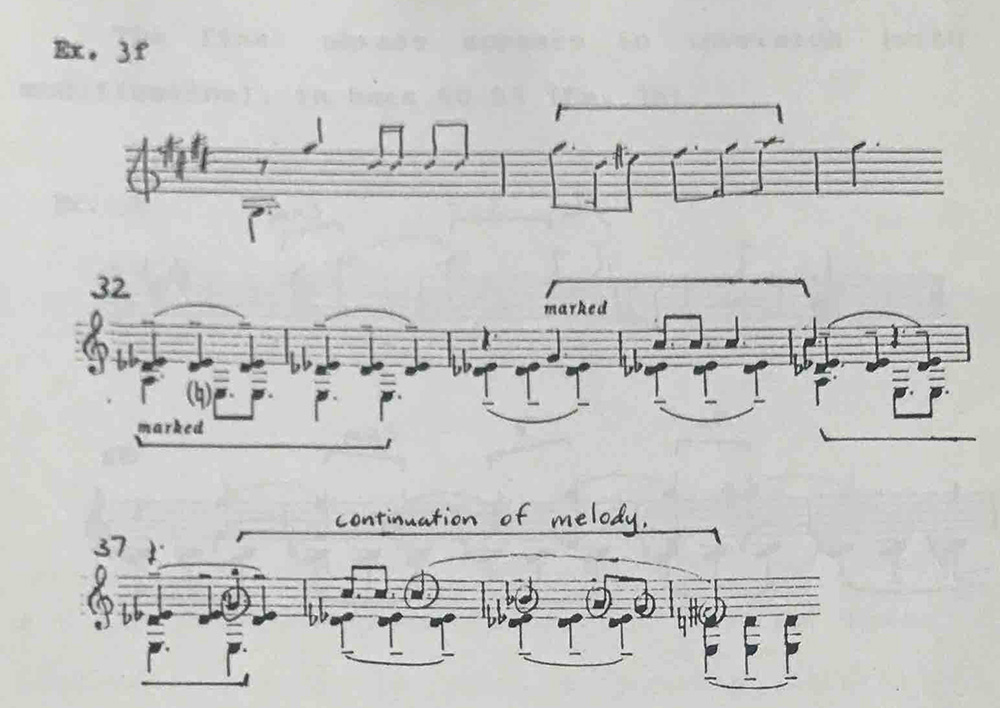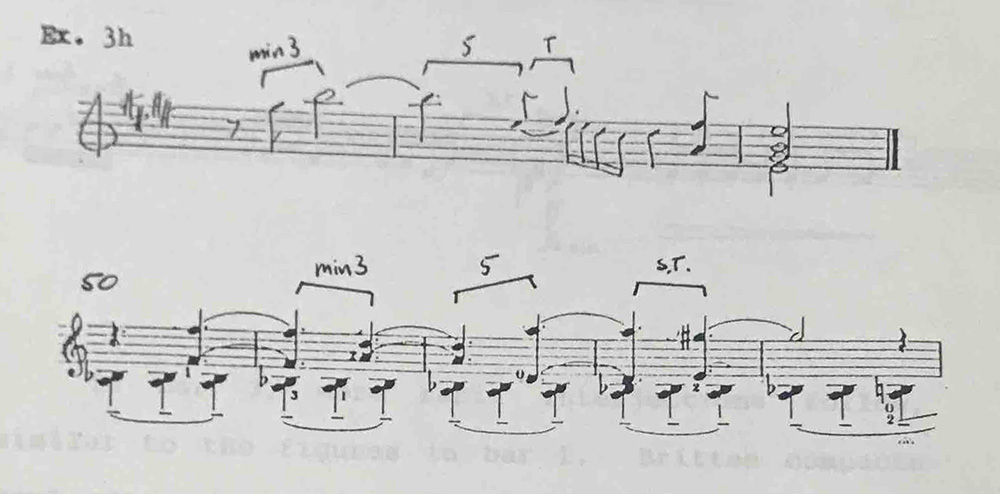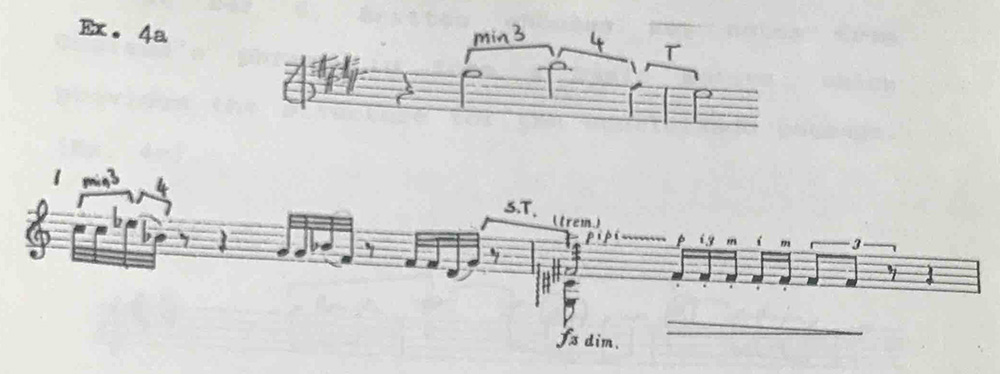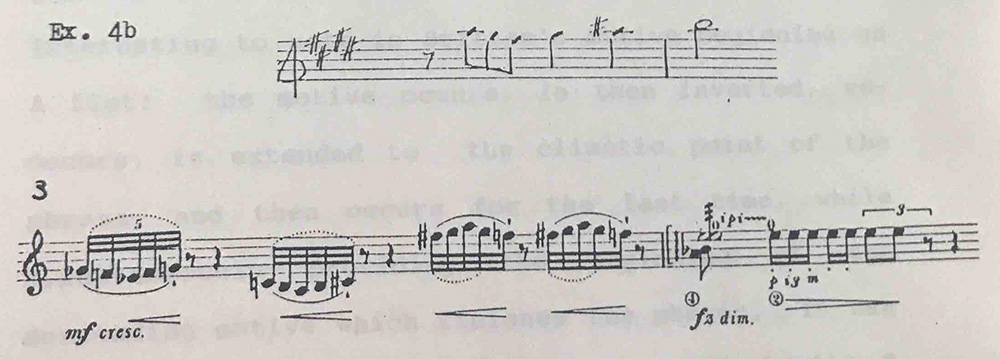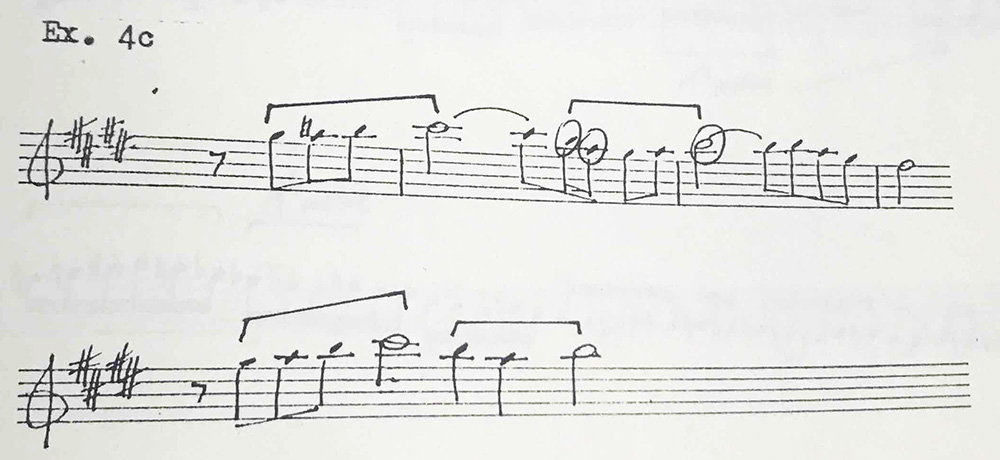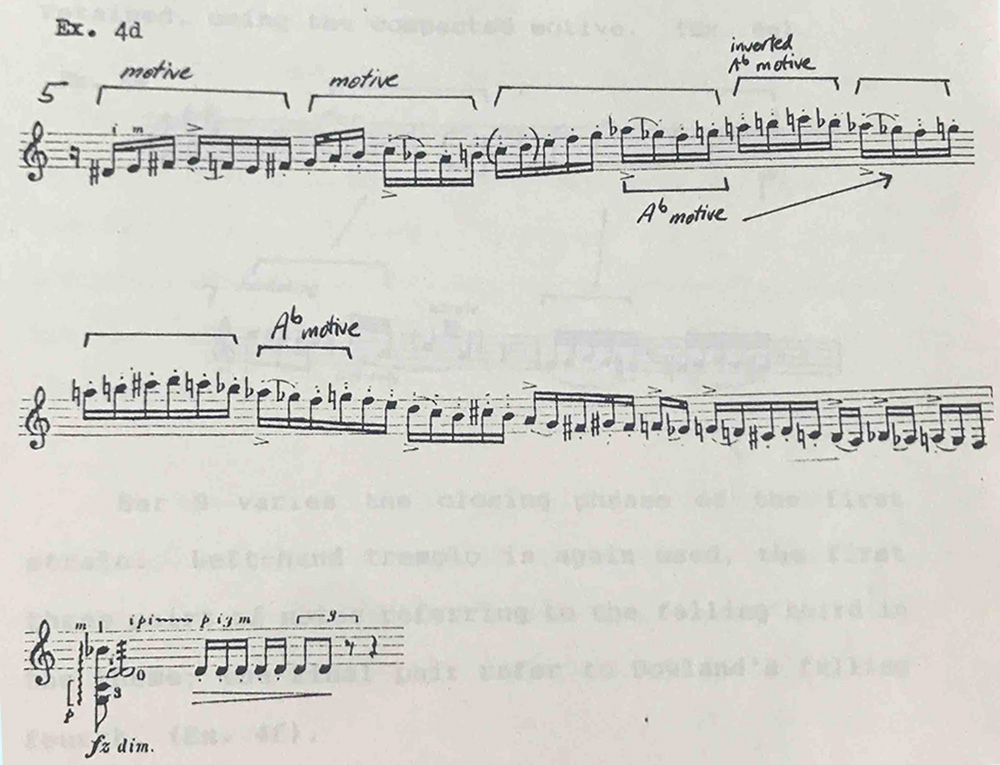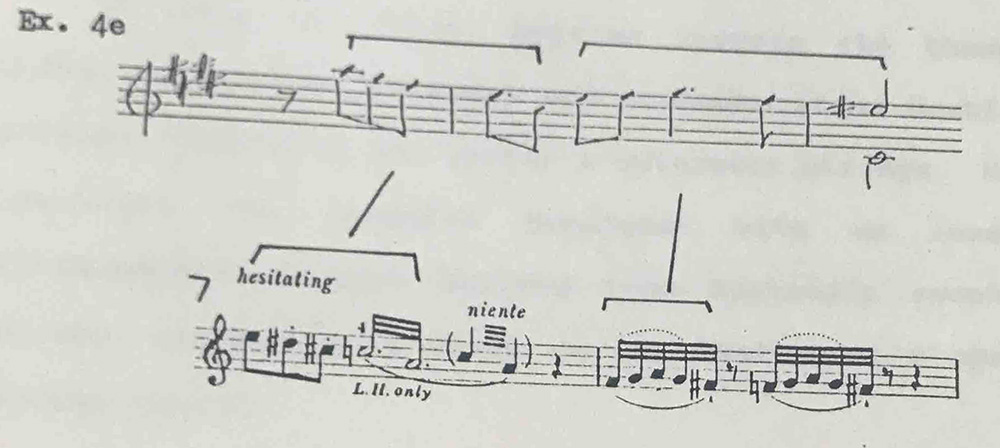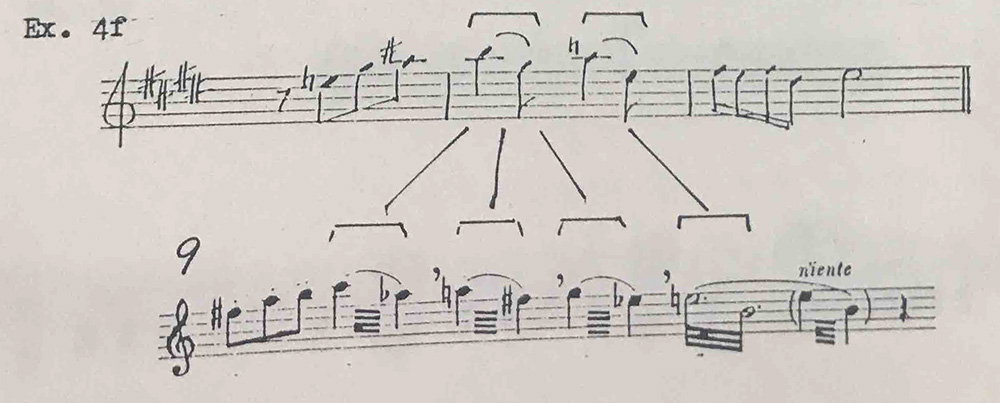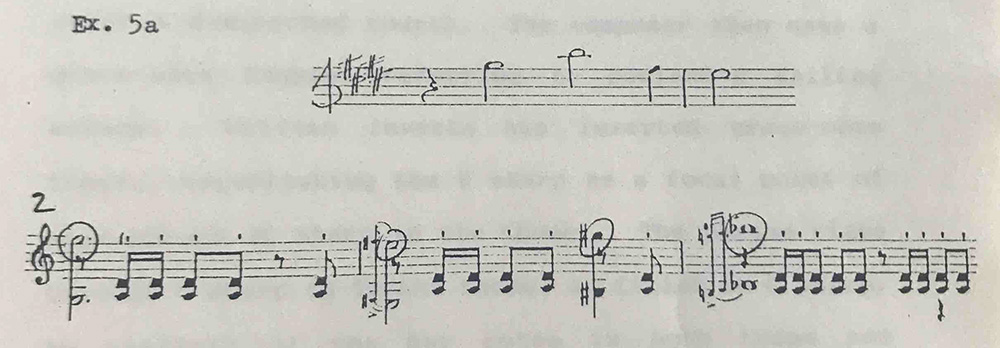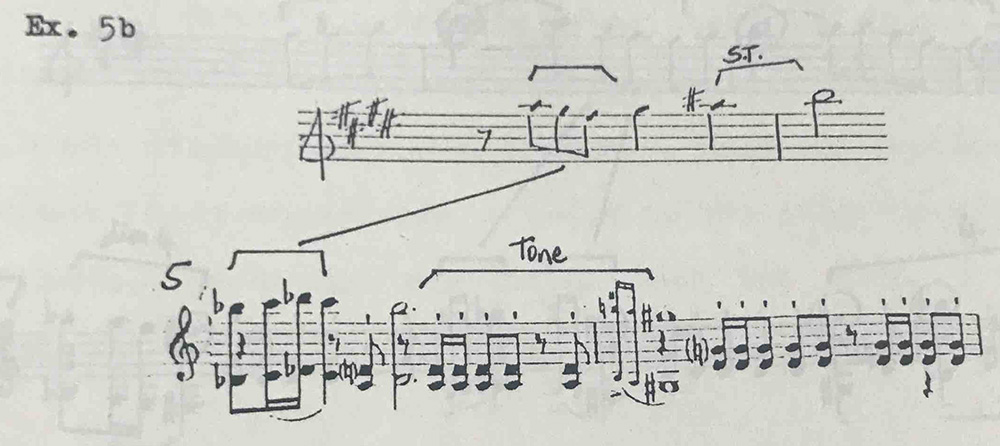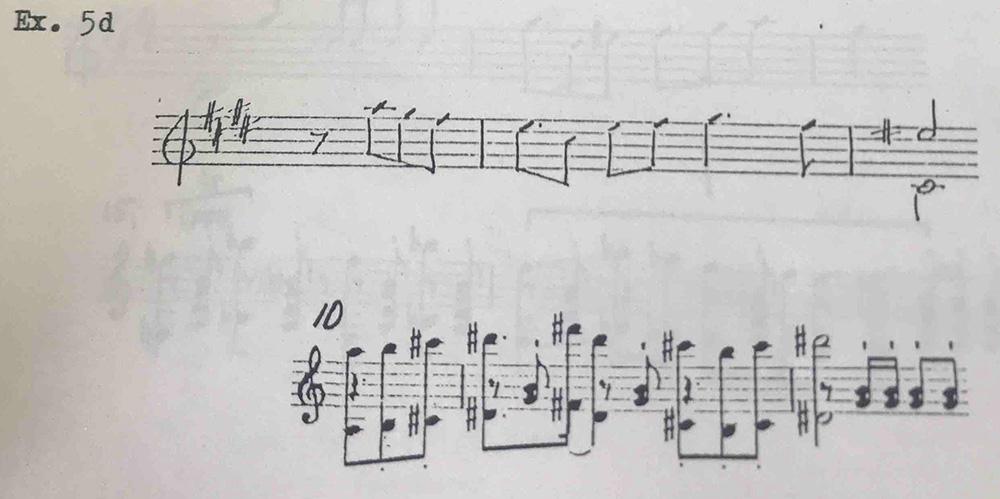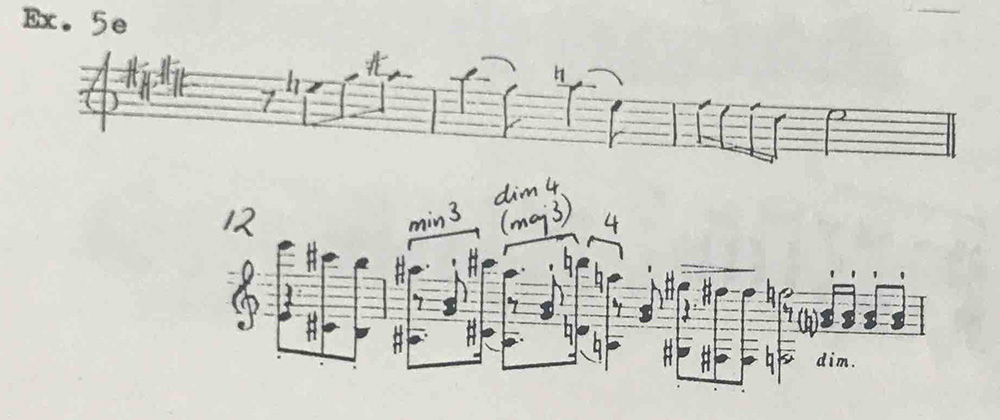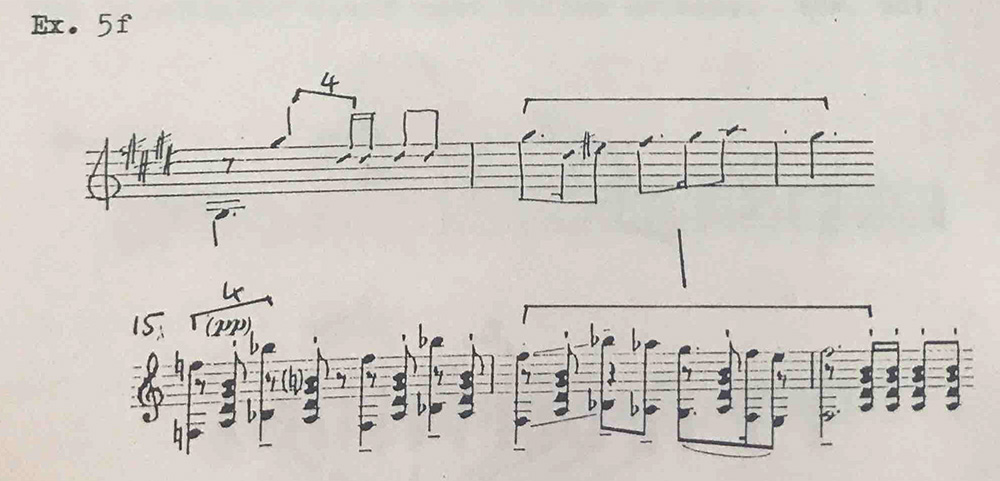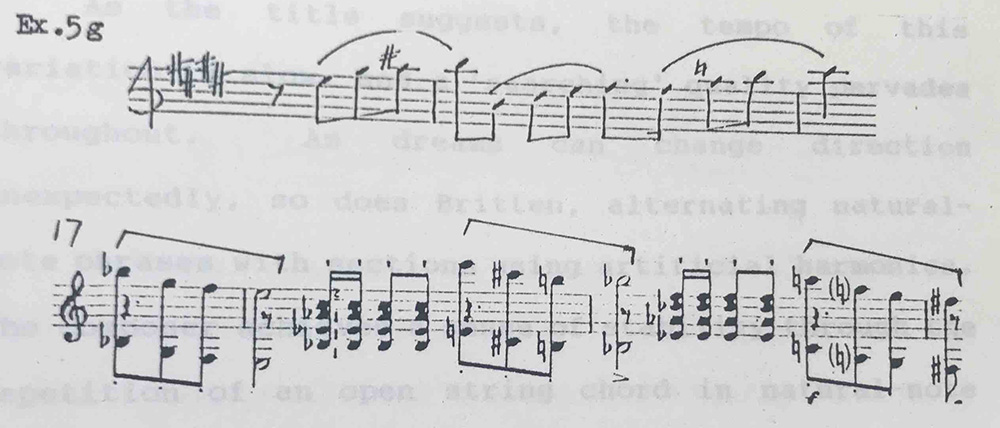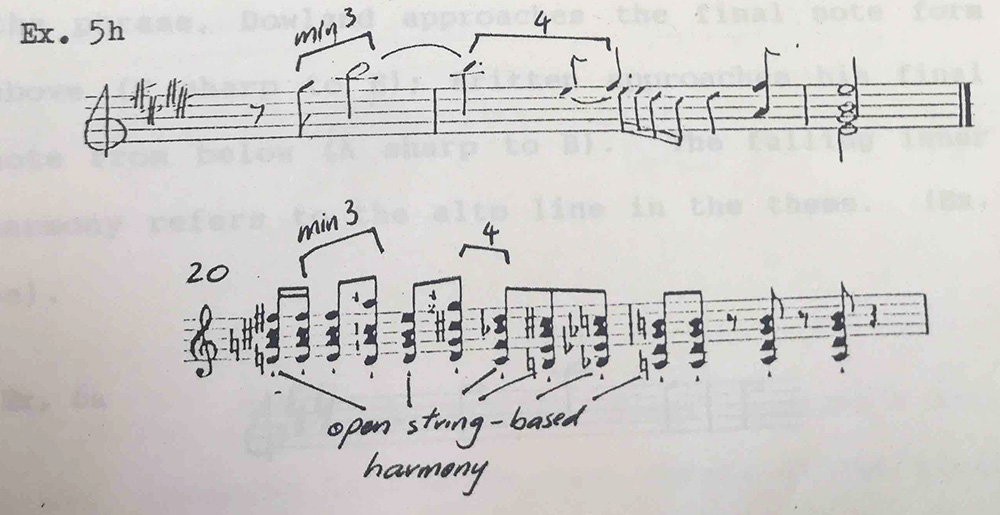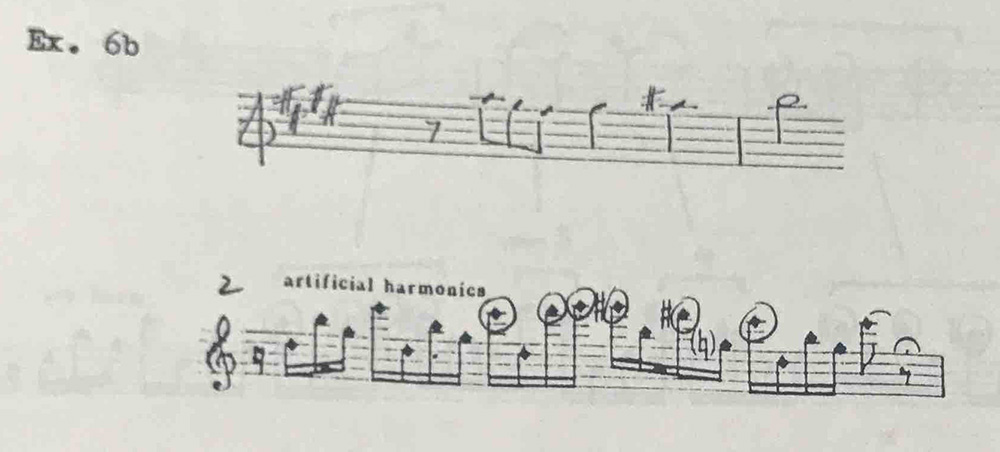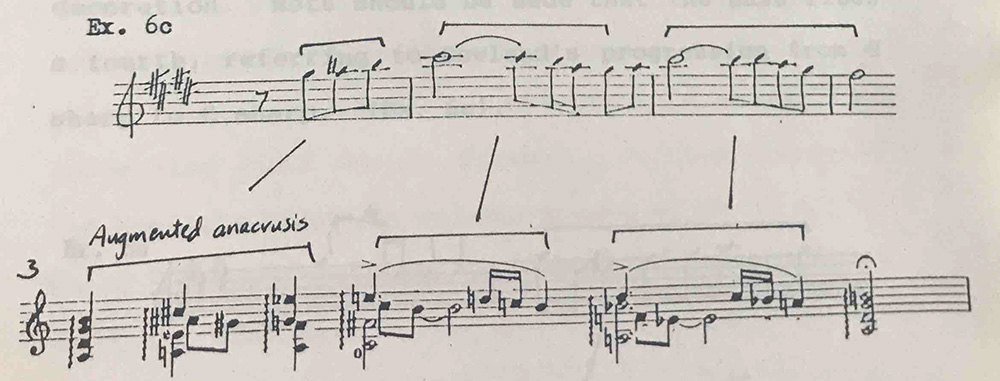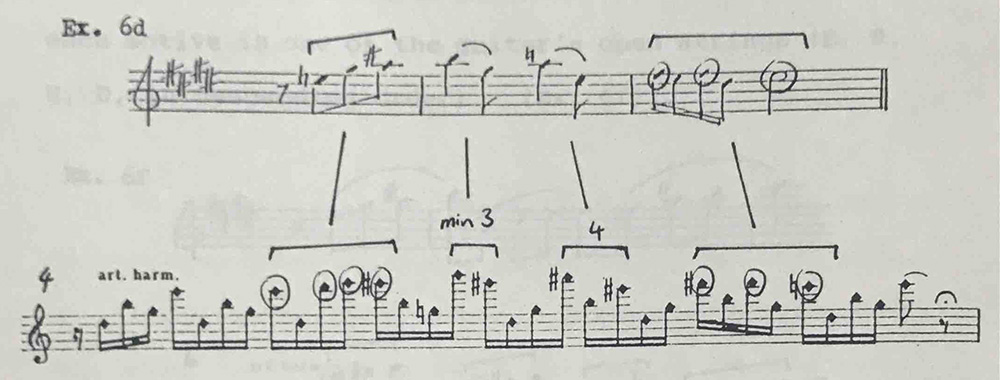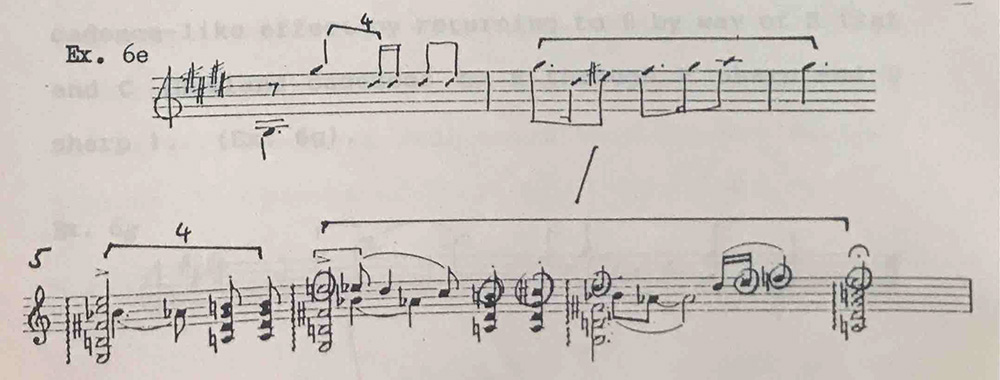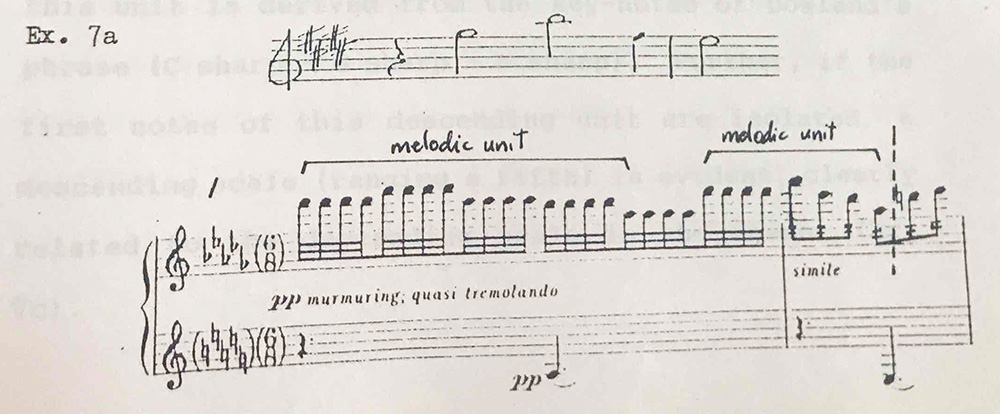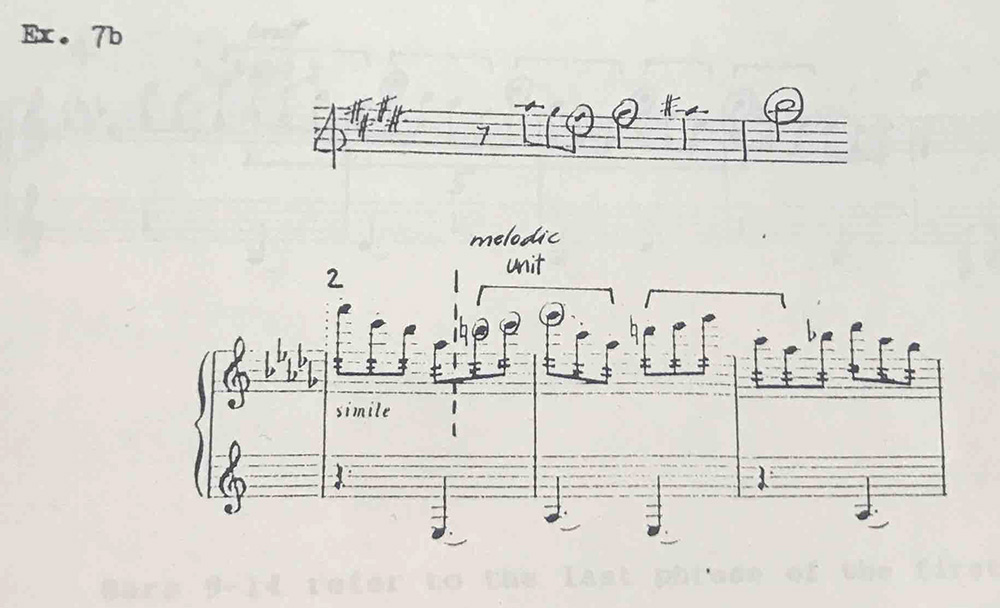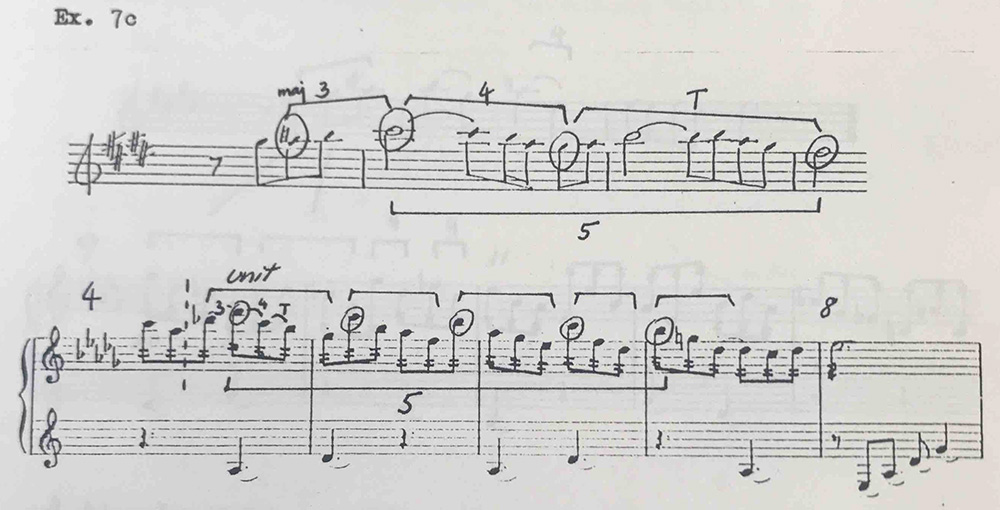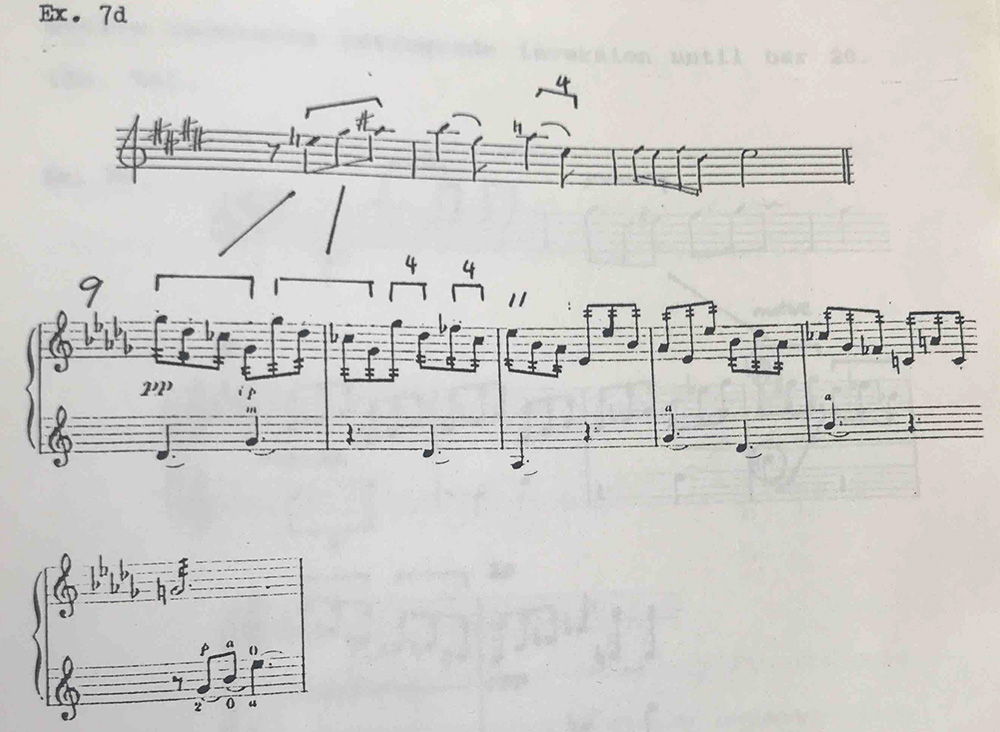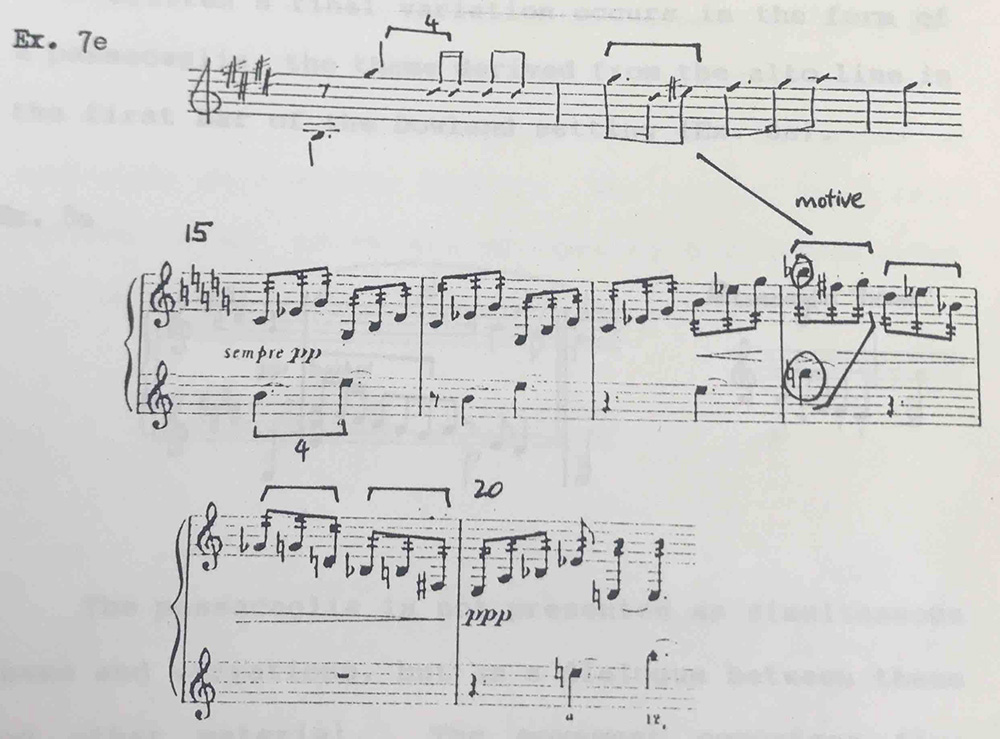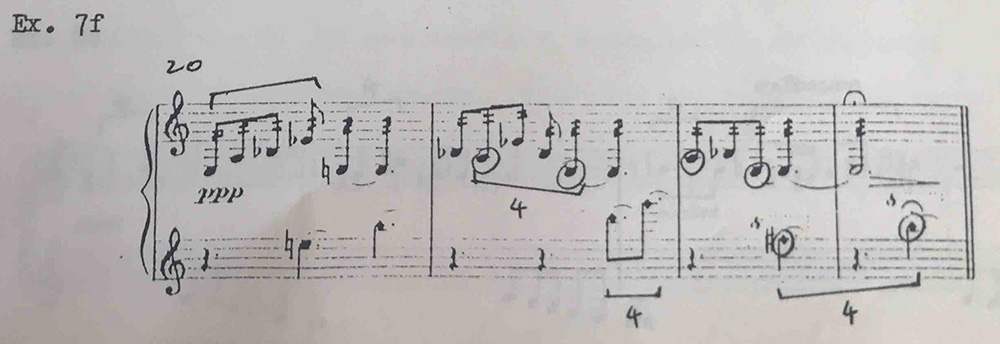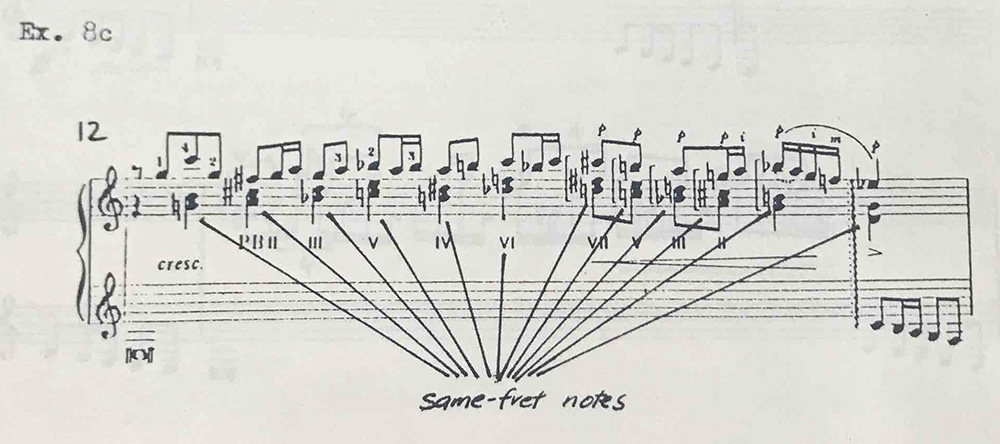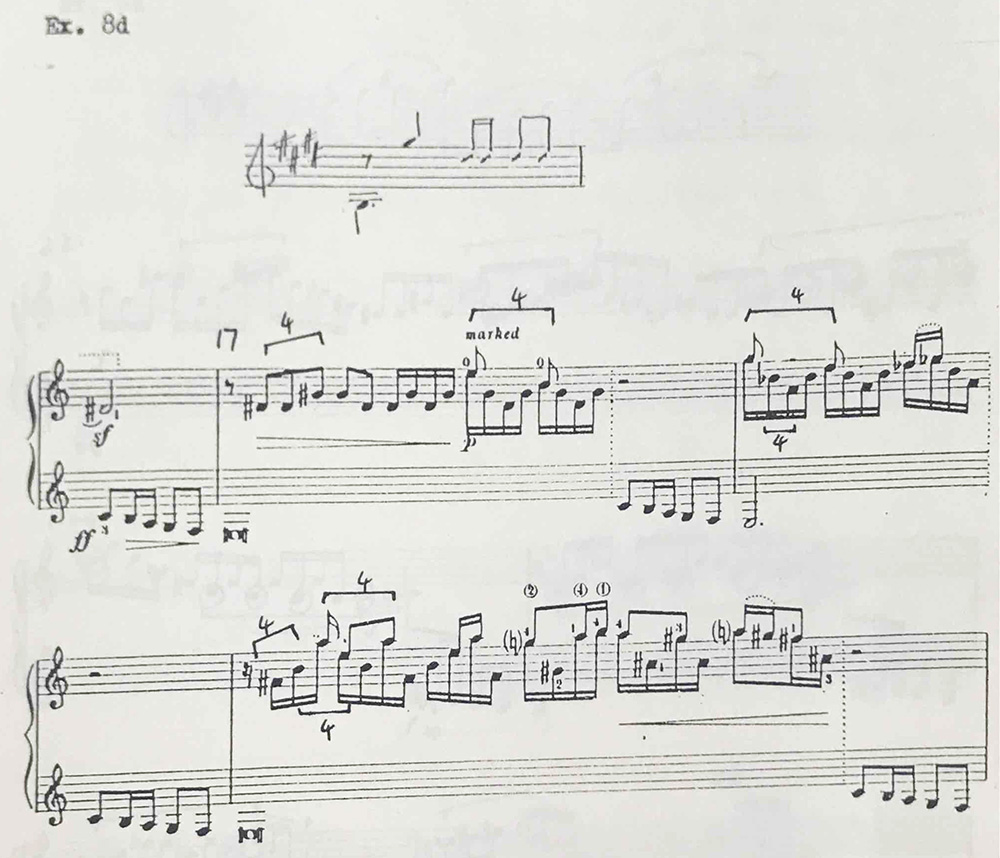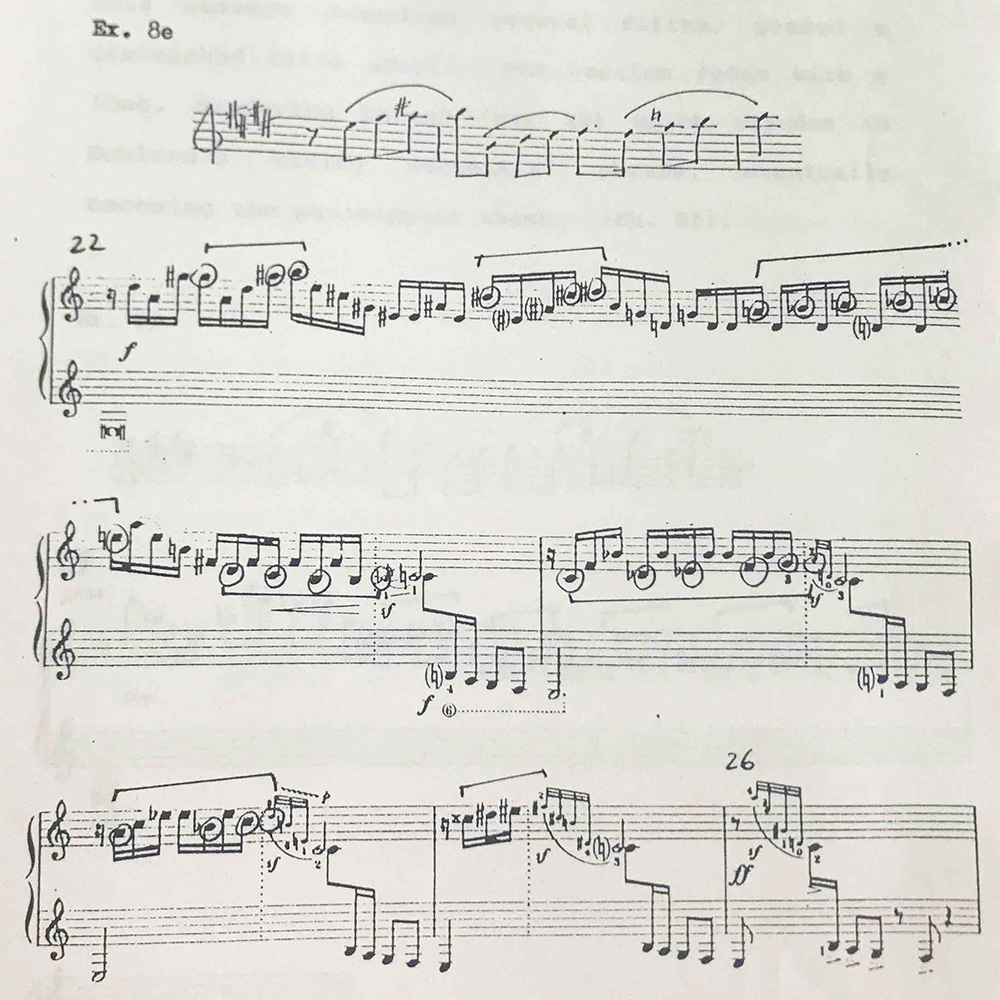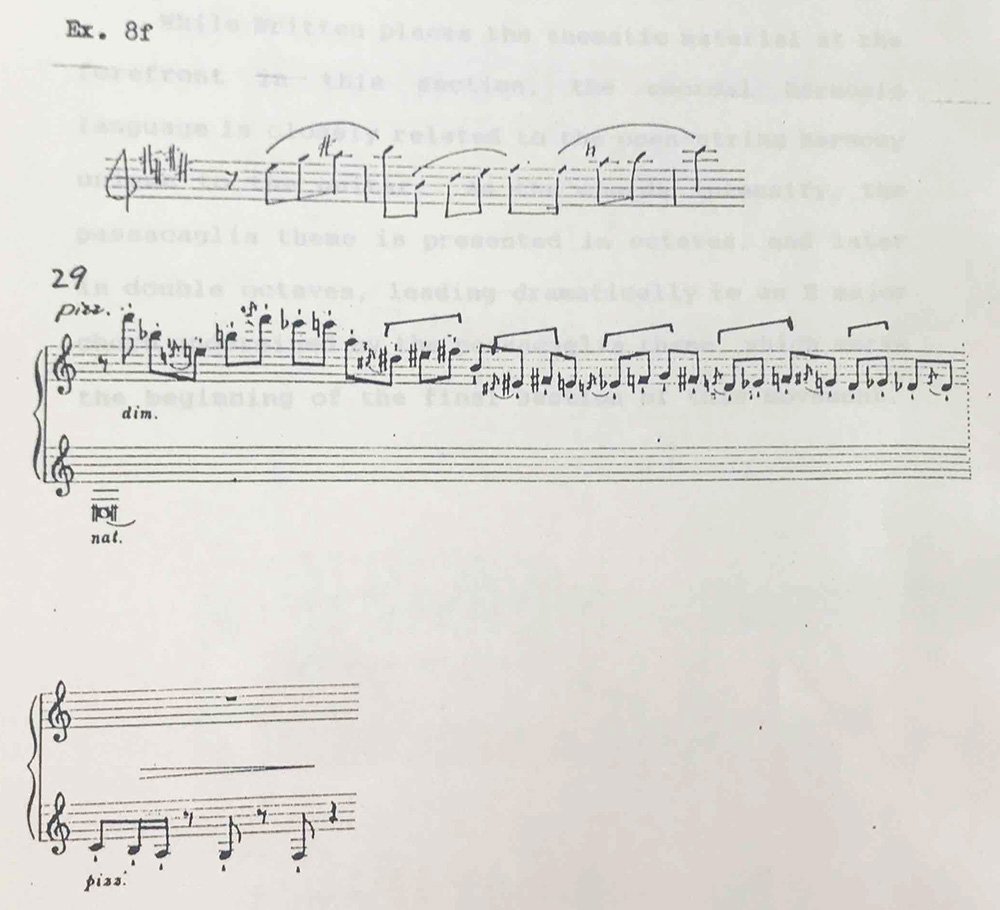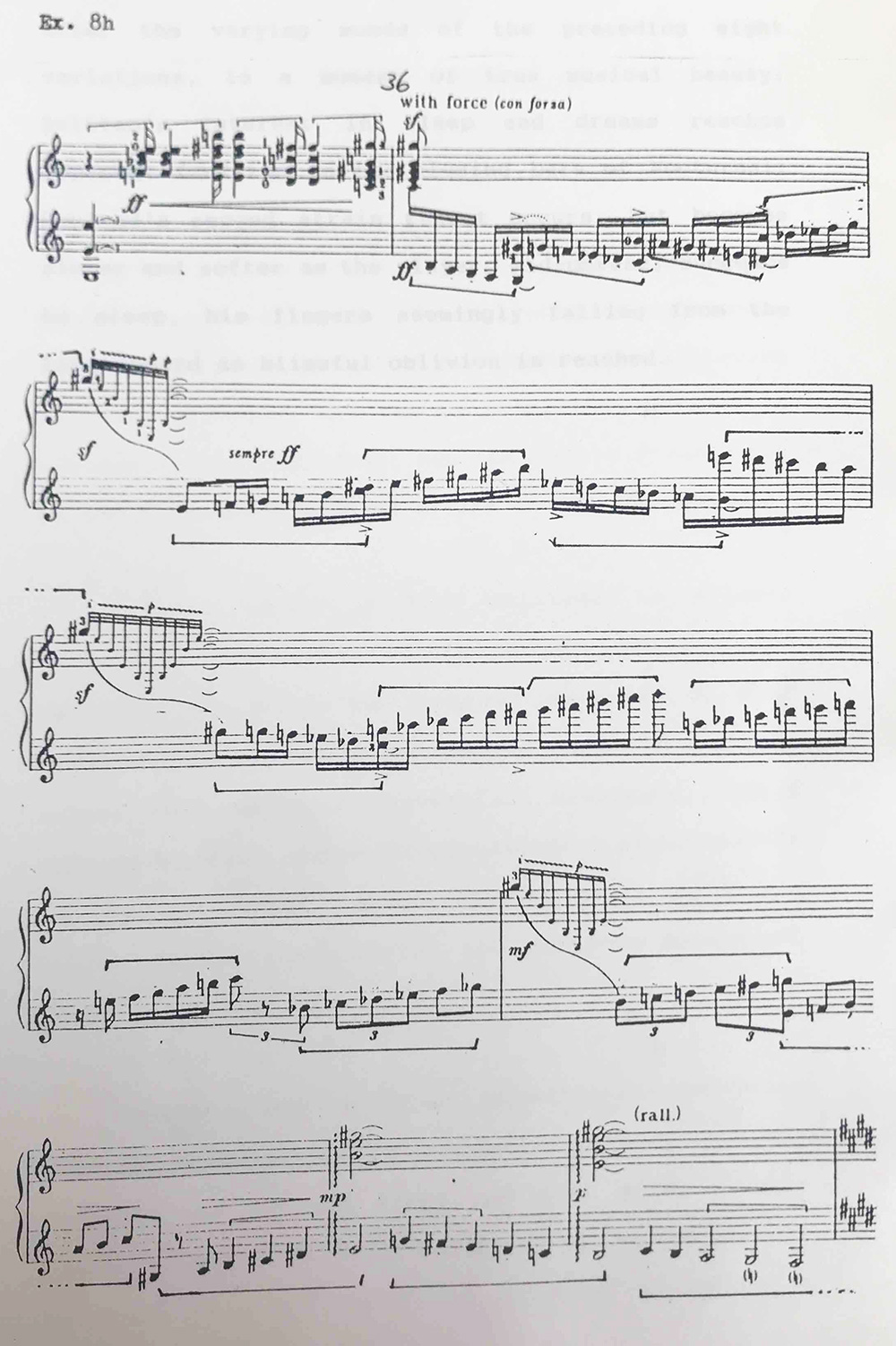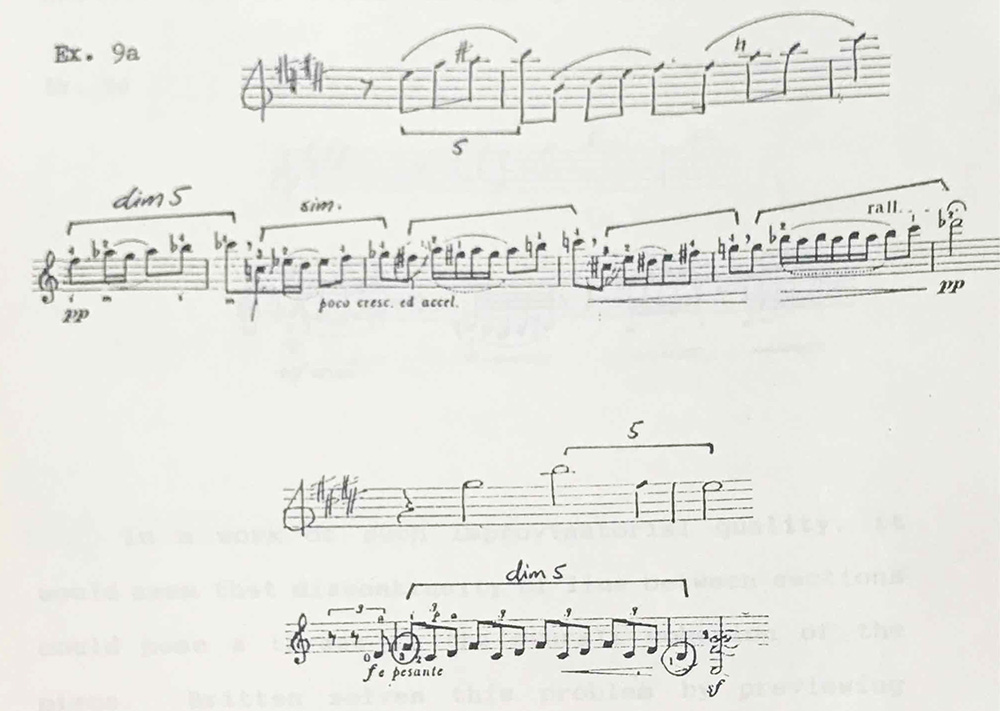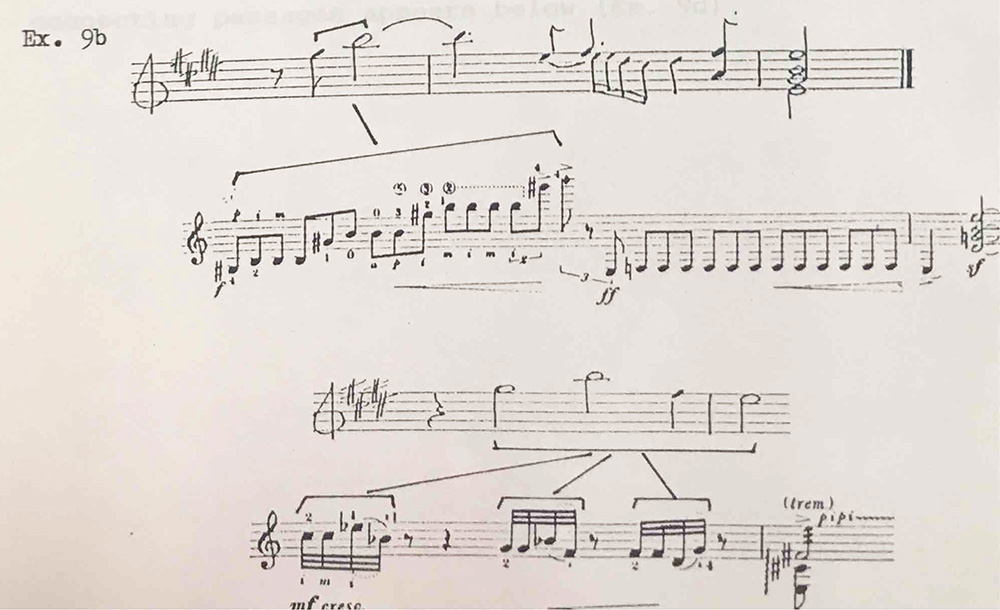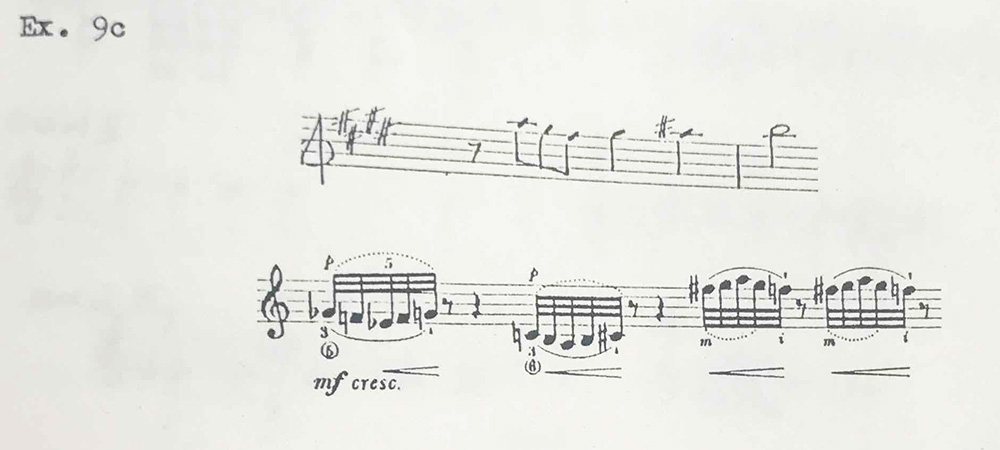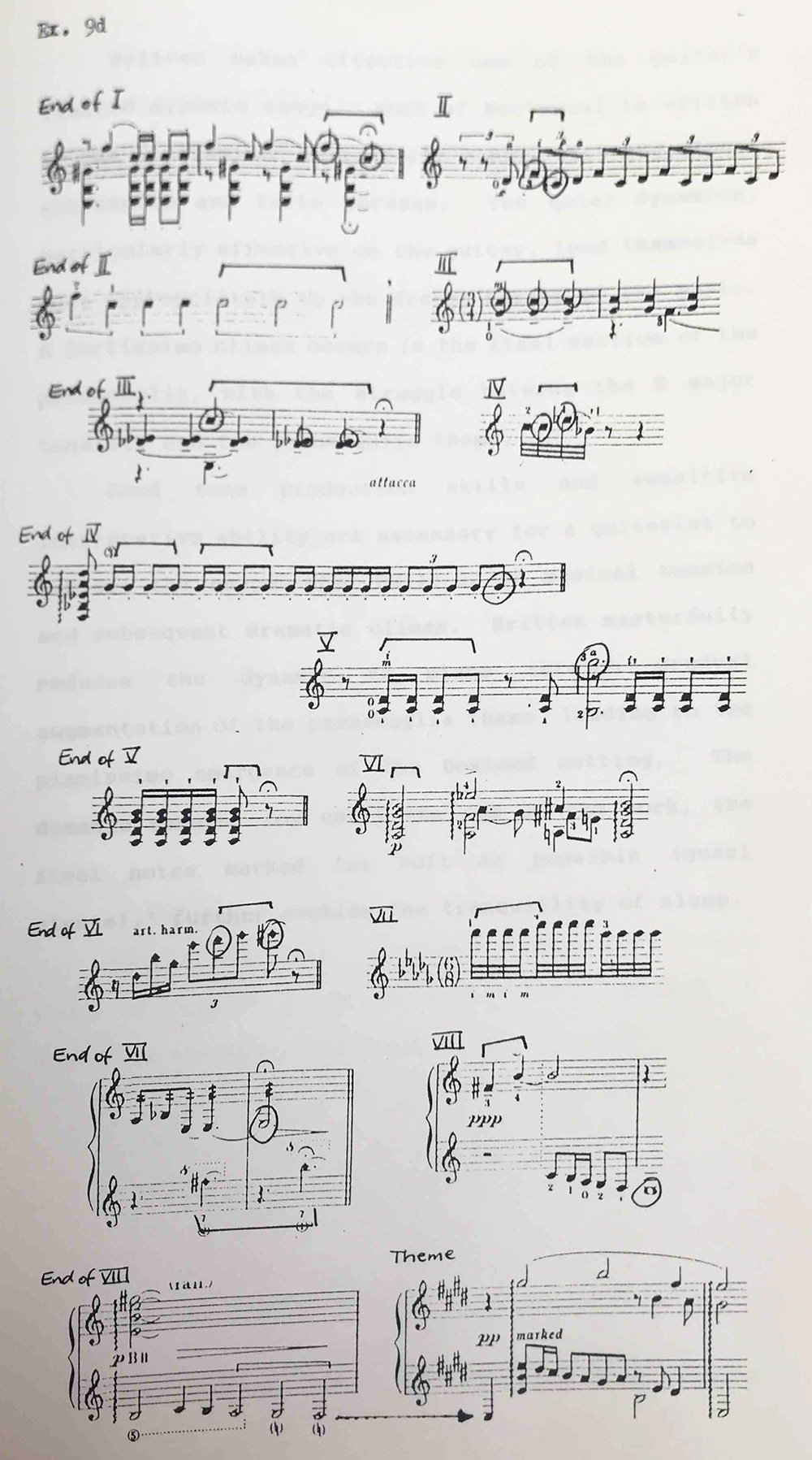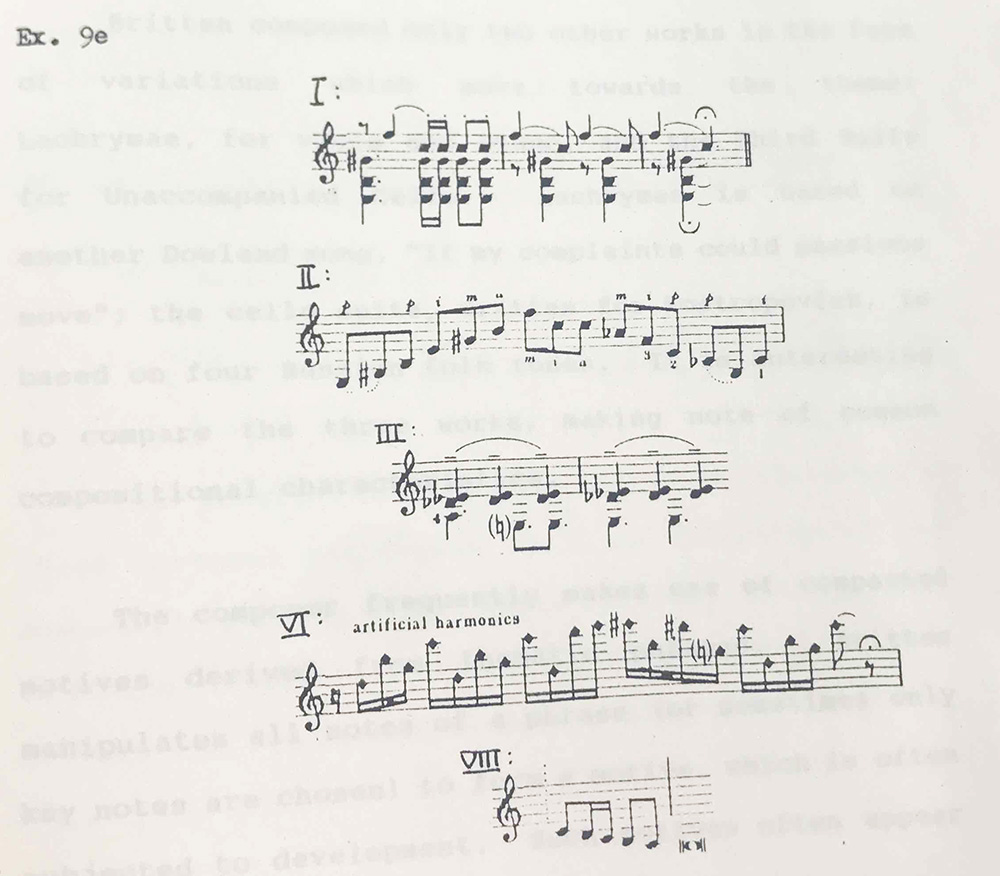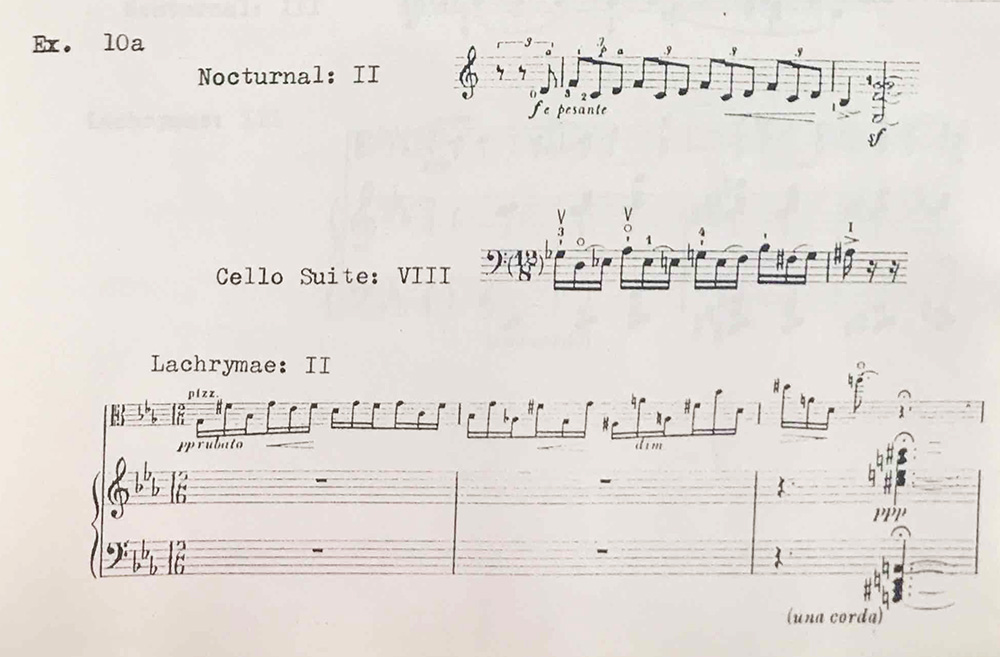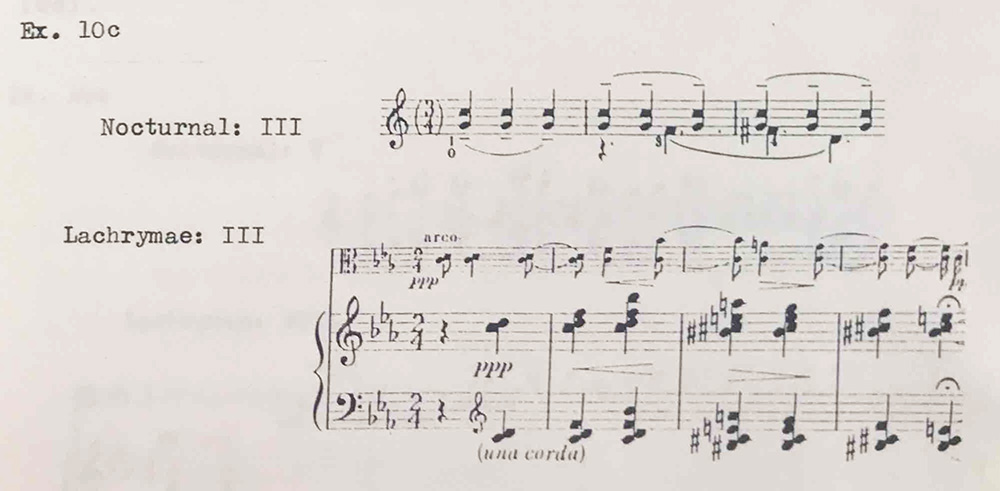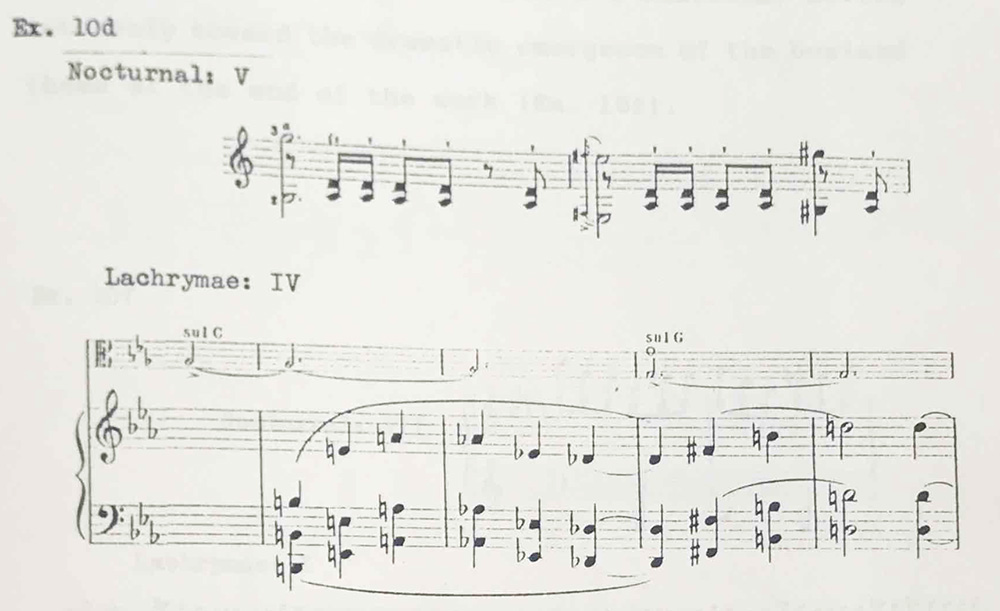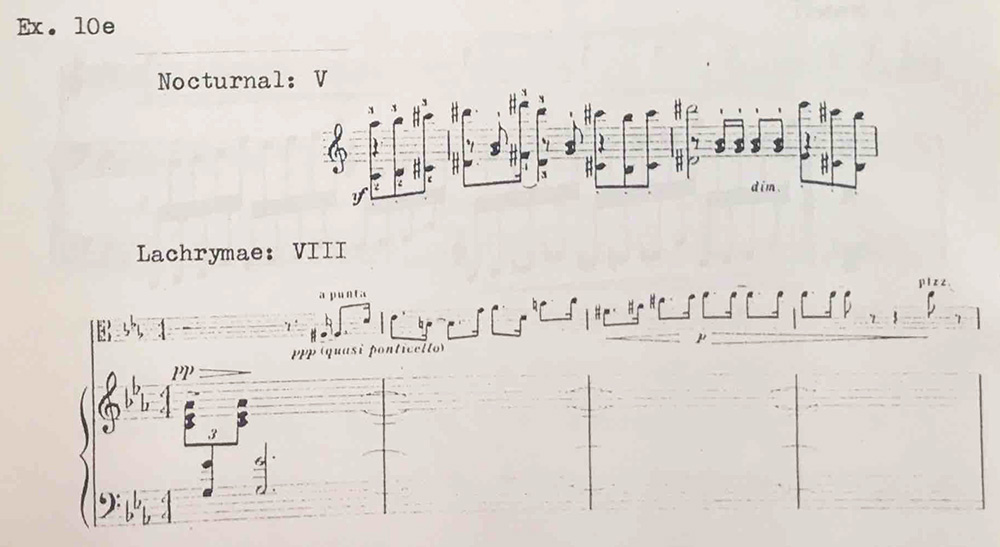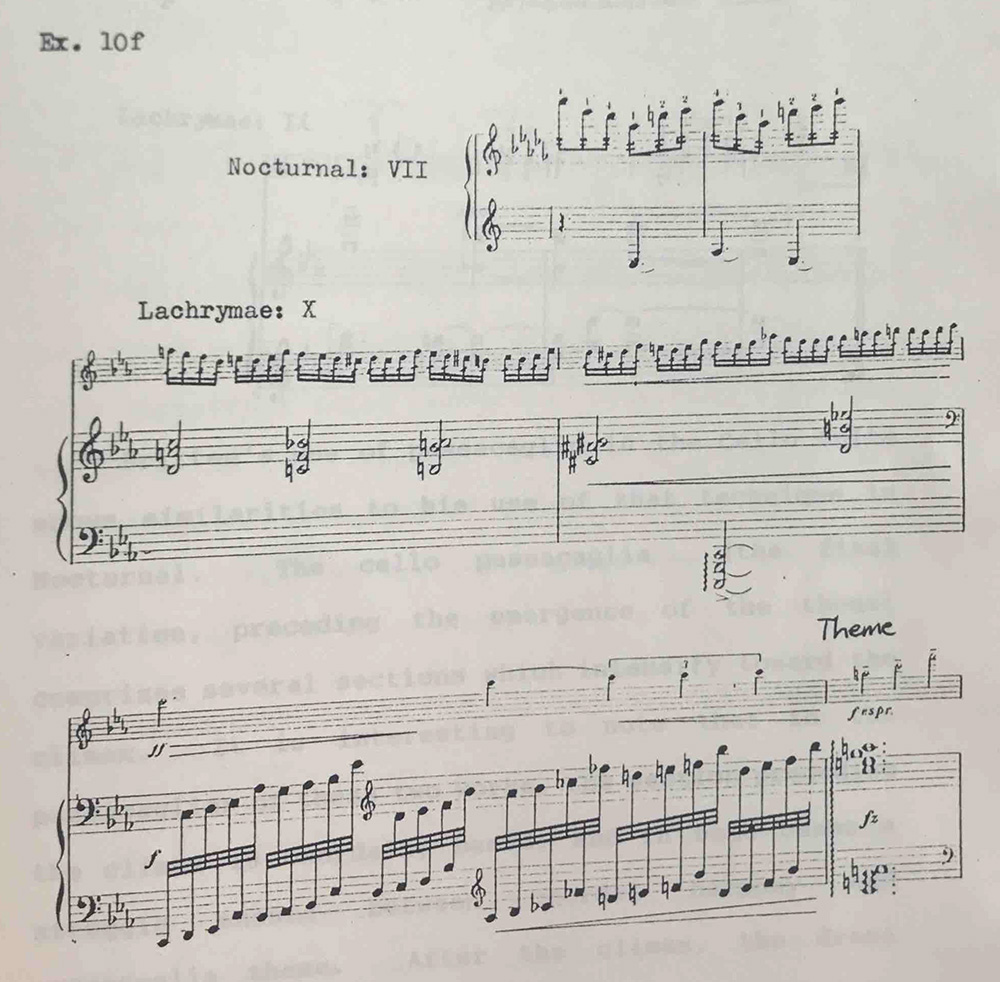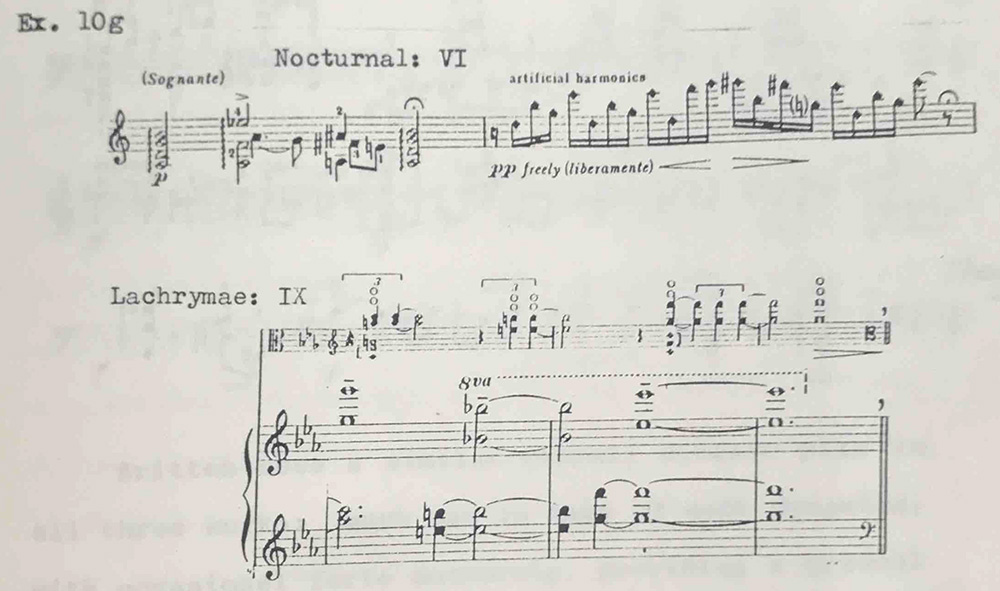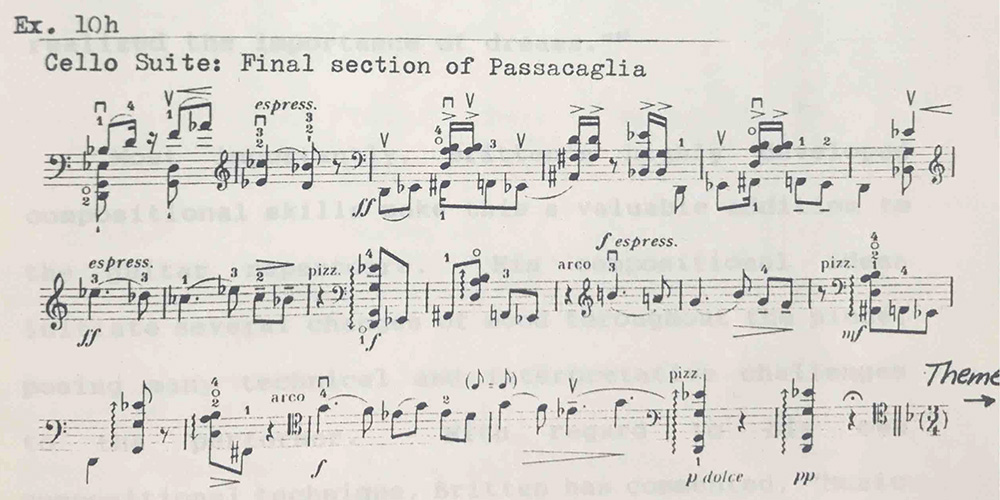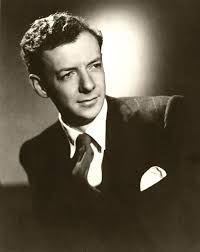
Benjamin’s Britten’s Nocturnal Op. 70.
An Analytical Study
By Paul Svoboda
Introduction
Completed in 1963, Benjamin Britten’s Nocturnal, Op. 70 for solo guitar, is essentially a set of variations on a song of John Dowland, Come, Heavy Sleep (No. 20 in Dowland’s “First Book of Songs or Ayres of Four Parts,” published in 1597.) In Britten’s piece, the original theme is stated only at the conclusion of eight contrasting movements (variations.) This unusual compositional format appears in two other Britten works: Lachrymae, for viola and piano, and the Third Suite for Unaccompanied Cello.
Share this:
[feather_share]
The main aim of this thesis is to identify and elucidate Britten’s methods of varying Dowland’s theme. Attention is focused on the composer’s use of thematic units, motives and motivic development, compacting of thematic phrases, and modification or preservation of Dowland’s intervals within phrases. Note is made of the use of typically “guitaristic” devices employed in the harmonic language.
Overall trends are identified and discussed. Reference is made to Lachrymae and the Third Cello Suite, to make any relevant comparisons between the three works (all of which assume the form of variations moving toward the theme.
Introduction
Come, heavy Sleep, the image of true Death,
And close up these my weary weeping eyes,
Whose spring of tears doth stop my vital breath,
And tears my heart with sorrow’s sigh-swoll’n cries.
Come and possess my tired thought-worn soul,
That living dies, till thou on me be stole.
Completed in 1963, Benjamin Britten’s Nocturnal Op. 70 for solo guitar was premiered by the dedicatee, Julian Bream at the Aldeburg Festival of 1964. The work is essentially a set of variations on a song of John Dowland, Come, heavy Sleep (No. 20 in Dowland’s ‘First Book of Songs or Ayres of Four Parts,’ published in 1597). Nocturnal incorporates aspects of Britten’s writing present in several of the composer’s works: his love Elizabethan music (1) ; his pre-occupation with night, sleep and dreams (2); and his interest in variation technique.(3)
Nocturnal was written at the end of period during which Britten’s output consisted mainly of vocal works. The 1950s saw the completion of such dramatic works as Billy Kidd, The Turn of the Screw, and A Midsummer Night’s Dream, as well as more lyrical works, such as Canticle 111 Still falls the rain, Winter Words, and Nocturne Op. 60 (for tenor, seven obbligato instruments and string orchestra). (4)
During this period Britten’s only instrumental works were Lachrymae (Reflections on a song of John Dowland), for viola and piano (1950), Six Metamorphoses after Ovid, for solo oboe (1951), Alphine Suite for recorder trio (1955), Scherzo for recorder quartet (1955), and Fanfare for St. Edmundsbury, for three trumpets. (5)
At the beginning of the 1960s, the great Rusian cellist, Rostropovich prompted the composer’s return to instrumental writing by commissioning a cello sonata. At the time, Britten showed much interesting music at a “minute, cellular level.” (6) It is noted further that “… already in the cello sonata of 1961 there is to be traced a new economy of motivic writing.” (7) Such economy will also be seen in Nocturnal, and its prominence revealed in the process of analyzing the work.
The Aldeburgh Festival, of which Britten was the founding father, provided further stimulus, and works were often composed with specific performers, performances, and settings in mind. Such performers as violist William Primrose, Rostropovich, baritone Dietrich Fischer-Dieskau, Guitarist Julian Bream, harpist Osian Ellis, and of course, tenor Peter Pears all had works written for them. (8)
Britten’s pre-occupation with night, sleep, dreams and death becomes evident with a survey of his works (Pivovar provides a chronological list of such works, 1932-65). (9) Mention should be made of the Serenade (for tenor, horn and strings), Nocturne (for tenor, seven obbligato instruments and strings), and A Midsummer Night’s Dream. The Serenade (1943) presents settings of old English poems concerning evening and night, the final movement being a setting of Keats’ Sonnet to Sleep. (9) The work finishes with the singer falling asleep (similarly, in Nocturnal, the guitarist falls asleep, mid-phase, at the end of the piece). Roseberry identifies harmonic similarities linking Serenade (the Keats setting) to A Midsummer Night’s Dream. (10) Palmer relates the text of the Keats sonnet to the Dowland song which forms the basis for the guitar Nocturnal. The Keats text reads:
O smoothest sleep! If so it please thee, close
In midst of this thine hymn my willing eyes.
The Dowland song begins.
Come, heavy Sleep, the image of true Death,
And close up these my weary weeping eyes… (11)
In Nocturne Op. 60, Britten sets excerpts from a variety of English poems (Shelley, Coleridge, Keats, Wordsworth, Shakespeare, Owen) based on a common theme of night, sleep and dreams. (12) According to Mellers, “it starts where its companion piece, the Serenade… leaves off.” (13) The theme of night, sleep and dreams was further explored in A Midsummer Night’s Dream. As Routh states, “… dreams and night-spells are peculiarly characteristic of this composer.” (14)
Britten’s interest in early English music and literature is evident by a survey of his works. His love for Purcell is documented by Roseberry. (15) Dowland’s music is featured in Lachrymae (viola and piano) as well as in Nocturnal. Early English texts are used in the Serenade Op. 41, The Holy Sonnets of John Donne Op. 35, A Charm of Lullabies Op. 41. Five Flower songs Op. 47, Nocturne Op. 60, A Midsummer Night’s Dream Op. 64 (using Shakespeare’s text), Songs and Proverbs of William Blake Op. 74, Suite on English Folk Tunes Op. 90, and Sacred and Profane Op. 91. (16)
Variation technique also features prominently in the works of this composer. Pivovar has compiled a list of such works, ranging the years 1932-65. (17) In most cases, Britten used the conventional format of theme followed by variations. In Nocturnal, this format is reversed; the work begins with variations which gravitate towards the theme. This de3parture from the norm occurs in two other instances; Lachrymae (composed thirteen years before Nocturnal), a set of variations based on Dowland’s If my complaints could passions move ; and the Third Cello Suite (1971), in which nine movements explore material related to four Russian themes, which only appear unaltered in the closing stages of the work.
In addition to showing a fondness for variations, Britten also made considerable use of passacaglia, which deserves special mention as the final variation of Nocturnal is based on this technique. Pivovar provides a list of works employing passacaglia during the years 1939-61. (18) To this list should be added the Cello Symphony (the final movement is a passacaglia) and The Third Cello Suite. The latter deserves particular attention due to its similarities to Nocturnal.
Both of these works, as stated, begin with variations which culminate in the thematic statement at the end. Further, both works use passacaglia as the form of the final variation, leading dramatically to the emergence of the source of the thematic material. Darrell Handel refers to Britten’s use of passacaglia as a “confirming finale, “ and adds that he “employs it to create a point of stability around which other movements can gravitate. (19) Handel further states, “The strictness of Britten’s grounds also means that the sense of forward movement lies entirely in the added material, which always shows a carefully controlled diversity of register, density, dynamics and rhythm. His passacaglias are always on the move through contrasts of texture, tone-color, range volume, and above all rhythmic clarity.” (20)
These categories are all employed in Nocturnal Op. 70. The song, Come Heavy Sleep provides the perfect vehicle for Britten to present a variety of moods and compositional ides within a quasi-programmatic work (as he did in Lachrymae).
In the central portion of this article the analysis of Nocturnal, the main aim will be to identify and elucidate Britten’s method of Varying Dowland’s theme. Attention will be focused on Britten’s use of thematic units, motives and motivic development, compacting of thematic phrases, modification or preservation of Dowland’s intervals within phrases. Further, reference will be made to typically “guitaristic” devices (such as same fret barre chords) used in the work, as such devices can sometimes explain the harmonic language of passages in guitar music, due to the complicated nature of the instrument.
Overall trends will be identified and discussed. Reference will be made to Lachrymae and the Third Cello Suite, to make any relevant comparisons between the three works (all of which assume the form of variations moving toward the theme).
Detailed Analysis of Nocturnal, Op. 70
Britten’s Nocturnal for solo guitar is a set of eight variations on the Dowland song, “Come, heavy Sleep,” in which Dowland’s original theme is stated at the conclusion of the eight contrasting movements. Generally, Britten has concentrated mainly on evolving material from the theme, however, occasionally use is made of accompaniment figures. Especially noteworthy in this regard is the manner in which he uses the descending figure (derived from the alto line in the first bar of the theme) as the basis of the Passacaglia, the final variation.
This is the original setting of “Come, heavy Sleep”:
I Musingly (Meditativo)
In this opening movement, Britten refers to all of Dowland’s phrases, phrase by phrase. An improvisatorial quality is maintained throughout, as the melodic line searches for a point of rest.
In bars 1-2, Britten ornaments the first phrase of the theme, while retaining its basic shape. Dowland’s intervals are preserved, except for the final note where Dowland falls a tone, Britten chooses a semitone (ex. 1a)
The second phrase occurs in bars 3-4. Dowland’s modulatory A sharp is accounted for by Britten’s B sharp. Note should be made of the relationship between these two phrases, especially the intervallic range encompassing the final notes of each phrase. The original range of a fifth (E to B) is maintained by Britten (F sharp to C sharp). (ex. 1b).
In bars 5-9 Britten forms a rhythmic motive from the middle pf Dowland’s next phrase. Motivic play follows, referring to the descending sequential nature of the theme. (ex. 1c).
In bars 10-12 Britten alters the intervals of the theme, focusing on the shape of the phrase. Key notes are disguised and chromatic decoration providing further improvisatorial effect. Note that Britten’s E flat in bar 11 rises to E natural at the end of the phrase, corresponding to Dowland’s E to E sharp. (ex. 1d).
Bars 13-15 present the final phrase of the theme’s first strain. The initial arpeggio Preserves the augmented fourth of Dowland’s anacrusis figure (Britten writes a diminished fifth). Some motivic play brings the phrase to an E, only to further fall to C. Note that Dowland’s phrase ranges a fifth (B toE): this interval is seen twice in Britten’s phrase (B to E, and G to C).
(ex. 1e).
Dowland’s second strain is clearly referred to at bar 16, though Britten constructs an E-F tonal conflict. The meter change in the original (into 6/8 dotted figures) becomes clear in bar 17. The phrase continues intervallically as in the theme, though with ornamentation. At the end of the phrase, an A major chord appears in the lower register, relative to the E major chord in bar 16. (ex. 1f).
Motivic Development occurs in bars 19-24. Based on the rhythm of the accompaniment figure at the beginning of the second strain, this motive makes clear reference to Dowland’s ascending sequence. Bars 19-20 are transposed up a semitone in bars 21-22. The enharmonic pitch repetition at bar 21 refers to Dowland’s repeated F sharp., which ends one motive and begins the next. Pitch repetition occurs again at bar 23, providing the beginning note for the final motive.(ex. 1g).
Bars 25-26 present the theme’s final phrase. The rising minor third (C sharp to E) corresponds to the original. The subsequent repeated E’s serve to “sustain” that note, to create the effect of the sustained B in the theme. The falling bass line refers to both the alto and bass lines in the Dowland. The falling diminished seventh (effectively, a major sixth reminiscent of the falling fifth in the theme. An ornament-like figure follows, allowing the phrase to come to rest. (ex. 1h).
This variation finishes with the beginning of the second strain, which is repeated in the original. However, the music soon fades away, as though the guitarist has fallen asleep, mid-phrase. It is interesting to note the basic melodic structure of this movement: Britten writes his melodic lines around two pairs of fifths (later, as fourths), a semitone apart. (ex.1i).
II Very Agitated
This variation comprises a series of agitato triplet phrases, punctuated by sforzando open string chords. By writing motives of three to six notes, and placing them in a triplet framework, Britten achieves a particularly effective agitato, e.g. at bar 16, where motives of four, five and six notes are used (see ex. 2g).
In bar 1 the theme’s opening statement is compacted into a short three-note motive. After three repetitions it falls a semitone to B (similar to the first variation, where G fell to F sharp). (ex. 2a).
Bar 3 follows the shape of Dowland’s next phrase. Key notes are decorated with extra figures. (ex. 2b).
In bar 5, Britten again follows Dowland’s phrase shape, but with intervallic modification. Two motives are evident here: the rising (and subsequently falling) fourth; and a short three-note figure (based on Dowland’s A Gsharp-A) appearing as E-D-E, D-Eflat-D, and C-B-C.) (ex. 2c).
In bar 8, the descending fourth in the them is made clear. Britten then emphasizes the minor third in the Dowland through bemiola. (ex. 2d).
In bar 10, the anacrusis figure is extended through its own transposition. The falling thirds, punctuated in low F sharps, make clear reference to the theme. The single falling fourth signals the end of the phrase. (ex. 2e).
The E-F conflict seen in the first variation reappears in bar 12, in arpeggiated form. The strong chordal structure would indicate the beginning of the theme’s second strain. Bar 12 is transposed up through thirds in bars 13-14: E major – F minor becomes A flat major – A minor, which becomes C major – D flat minor (Dorian mode). It is possible that the transpositions allude to Dowlan’s brief cycle of fourths at this point in the theme (G sharp – C sharp – F sharp). The latter half of bar 14 refers to Dowland’s melody. (ex. 2f).
In bar 16, Converts the rising sequential motive of the theme into an irregular figure comprising four, six, five, four and five notes respectively. The final motive in retrograde inversion. (ex. 2g).
The rising G sharp – B in the theme is highlighted in bar 18 in arpeggiated form,. The fall from the high B harmonic to the low E string effectively represents Dowland’s falling fifth. The subsequent repeated F naturals (F sharp in the theme) add a harsh chromatic flavor. (ex. 2h).
Bars 20-23 make reference to the second strain repeat, only to fade away on the repeated C naturals.
III Restless
The restless quality of this movement is achieved by its dissonant harmonic language, and the use of polyrhythm (melody in duple time, accompaniment in triple meter). Britten selects key notes from Dowland’s phrases to form economical melodic figures, the effect being that of musical abbreviation.
The theme’s opening phrase is alluded to in bars 2-3. Britten rises only a semitone, to then fall a major third, providing a vague reference to the direction of Dowland’s melody. (ex. 3a).
Similar treatment occurs in bars 5-6 (Dowland’s second phrase. Neatly compacted by Britten). (ex. 3b).
In bars 8-9 Britten chooses a fragment of the next Dowland phrase to form a simple figure. The first three notes of this figure form the basis of the next two melodic entries in bars 10-12. In bars 12-14, Britten augments the key notes from his own melodic figure (from bars 8-9). (ex. 3c).
The phrase from which this figure is derived is depicted in full in bars 16-20: Britten clearly follows the direction of Dowland’s melody. (ex.3d).
Two Dowland phrases form the basis for the following passage (bars 21-28). Britten’s initial figure, appearing in bars 21-22, and in bars 23-24, is a modified inversion of the theme, in which the basic structure of Dowland’s phrase is preserved (the fourth, followed by a minor third). In bars 24-25, G natural rises to G sharp, and in so doing articulates a corresponding statement to Dowland’s E to E sharp.
The second phrase clearly begins in bar 25, with Britten’s A-C-D referring to Dowland’s anacrusis figure. Falling thirds follow, until a falling fourth completes the phrase in bar 28. (ex. 3e).
The second strain begins in bar 32, with the falling fourth (A-E). This reappears in inversion in bars 34-36, and then continues in bars 37-39, again in inverted form. (ex. 3f).
Dowland’s sequential phrase is apparent in bars 41-48. Britten’s motive, closely related to Dowland’s appears in its natural shape in the bass, and inverted in the treble (four appearances), creating an antiphonal effect. (ex. 3g).
The final phrase appears in inversion (with modification), in bars 50-53 (ex. 3h).
An antiphonal effect is created again when the second strain repeat occurs at bar 59, with the use of natural and inverted figures. The figures eventually disintegrate, with the melodic remnants overlapping in upper and lower registers. As in the previous movements, the final notes fade away, morendo.
IV Uneasy
This variation deals with the first strain of the theme. The opening rapid motives are reminiscent of Dowland’s first phrase. Intervallic relationships are preserved, the third group of notes being inverted. The final note of the third group falls a semitone to F sharp (as in the previous variations). The tremolo on F sharp slows and fades into silence. (ex. 4a).
In bar 3, more rapid interjections follow, similar to the figures in bar 1. Britten compacts Dowland’s phrase to form a motive; intervallic relationships are again preserved. The third group appears inverted, and falls a semitone in bar 4, completing the inversion of Dowland’s phrase. (ex. 4b).
At bar 5, Britten chooses key notes from Dowland’s phrase to form a basic motive, which provides the structure for the accelerando passage. (ex. 4c).
This motive rises unsteadily until it climaxes at its highest point. From there, a new motive (derived from the final descending notes in Dowland’s phrase) brings the phrase irregularly to its end. Interesting to note is Britten’s motive beginning on A flat: the motive occurs, is then inverted, re-occurs, is extended to the climatic point of the phrase, and then occurs for the last time, while simultaneously providing the beginning of the descending motive which finishes the phrase. It can be argued that the A flat refers to Dowland’s B natural, which occurs three times (and is also the beginning of Dowland’s descending end-of-phrase figure). (ex. 4d).
Bars 7-8 (introduced “hesitating” by Britten) refer to Dowland next phrase. Intervals are varied. In bar 7, the left hand tremolo effect clearly refers to the falling minor third in Dowland’s melody. The tremolo fades, causing an interruption to the phrase. Bar 8 completes the phrase, using another rapid compacted figure, Note that the interval from the A in bar 7 toi the F natural in bar 8 is a major third descending: the corresponding part of Dowland’s phrase rises a minor third (C sharp to E). After this brief form of inversion, the melodic shape is retained, using the compacted motive. (ex. 4e).
Bar 9 varies the closing phrase of the first strain. Left hand tremolo is again used, the first three pairs of notes referring to the falling third in the theme; the final pair refer to Dowland’s falling fourth. (ex. 4f).
The variation finishes with a reference to the accompaniment figure which characterizes the beginning of the second strain. The fading pizzicato notes lead mysteriously into the next movement.
V March-like
In this variation, Britten inverts the theme (first and second strains) and presents it as double octaves, played on the guitar’s outermost strings. He contrasts the thematic treatment with an inner accompaniment figure derived from Dowland’s second strain, harmonically based on the instrument’s open string tuning.
In the first phrase, Dowland’s intervals are modified, though the shape of the phrase is preserved. The use of grace-notes (though glissandi) further disguises them. (ex. 5a).
In bars 5-6, the second phrase is presented. The melodic rhythm briefly mirrors that of the accompaniment figure. Intervals are modified as indicated in ex. 5b.
Similar treatment occurs in bars 7-10. Again, certain intervals are modified, and Britten’s rhythms emphasize the march quality of this variation. Where Dowland’s opening notes range a fourth, Britten’s cover a diminished fourth. The composer then uses a grace-note figure, referring to Dowland’s falling melody. Britten inverts his inverted grace-note figure, establishing the F sharp a focal point of this phrase (C sharp in the theme). The phrase rises through G sharp (B in the theme) to finish on C sharp. An Analysis of the key notes in both theme and variation reveals intervallic constancy: Dowland’s basic melody (C sharp – B – F sharp) is reproduced by Britten’s inversion (F sharp – G sharp – C sharp). (ex. 5c).
At bars 11-12, the thematic reference is clear. Britten’s first four notes range a tri-tone, compared to Dowland’s fourth. Further intervals prove to be consistent with the theme, except for the final note. If strict inversion had been made, to allow for Dowland’s modulatory E sharp, Britten’s D sharp should have been D natural. (ex. 5d).
The following phrase uses similar treatment as before. Dowland’s falling minor third and fourth are shown through a gradual widening of intervals (minor third, diminished fourth, perfect fourth). Britten’s final three notes seem to refer to the theme’s cadence figure, as though resolution does note occur. (ex. 5e).
At bars 15-16 the second strain melody is clear. (ex. 5f).
Similarly, in bars 17-20 the melodic reference is straight forward. Note that Britten preserves the theme’s octave displacement, yet the note repetition is modified. At bar 18, the opening string accompaniment is transposed, creating chromatic effect to intensify the phrase. (ex. 5g).
In bar 20 Britten makes vague reference to the theme. Transposed open string chords, falling chromatically, return the phrase to the security of the previously heard open string harmony. (ex. 5h).
Bars 22-26 show an incomplete repeat of the second strain, which dies away with the fading open string chord.
VI Dreaming
As the title suggests, the tempo of this variation is slow, and a ‘searching’ quality pervades throughout. As dreams can change direction unexpectedly, so does Britten, alternating natural-note phrases with sections using artificial harmonics. The composer achieves a sense of stability through the repetition of an open string chord in natural-note phrases, and by the repeated E’s in harmonics sections.
The first phrase makes vague reference to the theme: Britten modifies the intervals, but maintains the general melodic shape. In the cadence concluding the phrase, Dowland approaches the final note form above (F sharp to E); Britten approaches his final note from below (A sharp to B). The falling inner harmony refers to the alto line in the theme. (ex. 6a).
An harmonics passage follows, providing an approximate inversion of the theme. Open string harmonics decorate the melody. (ex. 6b).
Britten returns to natural notes for the following phrase, The first three chords are an augmentation of Dowland’s anacrusis figure. A motive follows, referring to the theme’s sequential like figure. (ex. 6c)
At bar 4, Britten appears to omit Dowland’s next phrase, choosing to use the last phrase of the first strain. Harmonics are used once more; the melodic reference becomes clear with analysis of the key notes (ex. 6d).
Bar 5 shows the beginning of the second strain: the falling fourth is present, as are two repeated staccato chords. The melody line continues, amid decoration. Note should be made that the bass rises a fourth, referring to Dowland’s progression from G sharp to C sharp. (ex. 6e).
Another harmonics passage occurs, alluding to the theme’s ascending motive. Britten writes an irregular motive which occurs four times. The first note for each motive is one of the guitar’s open strings (E, B, G, D, in descending order). (ex. 6f).
In bar 7 Britten makes shadowy reference to Dowland’s final phrase. As with previous natural-note phrases in this variation, the focal point is the open-string chord, with melody note B. The rising minor third alludes to the theme, though the descending fifth is not present. Britten creates a cadence-like effect by returning to B by way of B flat and C (Dowland cadences to E through F sharp and D sharp.) (ex. 6g).
Bars 8-10 show incomplete references to previous passages, as though passing from one dream to the next, without adequate exploration.
VII Gently rocking
In this variation, Britten features bell-like open-string notes against a continuous tremolando line in a contrasting tonal plane. Dowland’s phrases are compacted into melodic units of four or five notes, which, when repeated within a 6 / 8 time signature, create a hemiola effect.
The first melodic unit comprises five notes, the first four of which clearly relate to Dowland’s first phrase (the fifth note is supplementary, having already appeared in a higher octave). This unit is repeated immediately, crossing the bar line. Its rising minor third, falling fourth, falling tone, and falling fourth, re-occurs several times throughout the movement (sometimes with Modification). It is interesting that Britten manages to use this opening motive in subsequent references to different Dowland phrases (in bars 4-6, 9-13, 20). (ex. 7a).
A second melodic unit, also comprising five notes, occurs in bar 2. The ascending shape of this unit refers approximately to the key-note shape of Dowland’s phrase. (ex. 7b.)
In bars 4-8, Britten creates a four-note melodic unit which descends in sequence, recalling aspects of the theme (the unit is modified in bars 6-7). Note should be made of this unit’s similarity to the unit in bar 1. In this case, however, it is likely that this unit is derived from the key-notes of Dowland’s phrase (C sharp-G sharp-F sharp). Further, if the first notes of this descending unit are isolated, a descending scale (ranging a fifth) is evident, Clearly related to the descending scale in the theme. (ex. 7c).
Bars 9-14 refer to the last phrase of the first strain. In bar 9 the three note anacrusis figure in the theme is inverted and modified into a four note unit, which is repeated across the bar line. In bar 10, two pairs of descending fourths occur, referring to Dowland’s falling figure. Note should be made of the connection between bars 8-9. It is possible to consider the E flat in bar 8 not only as the end of the sequential phrase (bars 4-8), but also as the beginning of the next phrase: if the E flat is grouped with the first four notes in bar 9, the opening motive (bar 1) is formed in a different register. Bars 11-12 are a repeat of the previous two bars, transposed down a minor third. (ex. 7d).
In bar 15, the tremolando line key signature (five flats) is cancelled, to effect the change of key at the beginning of Dowland’s second strain. Britten hints at a C minor tonality in bars 15-16, using C minor and G major triads in the tremolo line. Simultaneously, the falling fourths in the theme is inverted, being played on the top two strings of the guitar (B and E). The tremolando line rises by a succession of thirds to a climatic point at bar 18, where a descending three note motive, derived from the theme, takes the phrase to the lowest note on the instrument (note that the climatic note is B natural, with a semitone clash of B flat). The descending motive undergoes retrograde inversion until bar 20. (ex. 7e).
At bar 20, the first three notes seem to be related to the descending motive of bar 18. However, if the first four notes are considered, a modified inversion of the opening motive in bar 1 is formed. These notes (bar 20) undergo note interchange in bars21-23. Through clever use of left hand fingering and cross-string effects, the falling fourth (A to E) is given prominence in these closing bars, providing a cryptic reference to the beginning of Dowland’s second strain repeat. (ex. 7f).
Britten’s final variation occurs in the form of a passacaglia, the theme derived from the alto line in the first bar of the Dowland setting (ex. 8a).
The passacaglia is not presented as simultaneous theme and variations, but as a dialogue between theme and other material. The movement comprises five uninterrupted sections, each distinct in character and construction. Of all the movements of Nocturnal, the passacaglia is certainly the most complicated: Britten engages in development of his own themes and motives, derived from Dowland.
Found in several phrases of the Dowland theme, the interval of a perfect fourth is used to head the opening motive which unfolds over the first three bars. Its extension is achieved by means of a figure based on the passacaglia theme in bar 3. (ex. 8b).
Bars 1-3 re-appear in bars 6-8, transposed up a minor 3rd, with some modifications. A further extension of this three-bar motive occurs in bars 10-16 and brings the first section of this movement to a close. The chordal harmony in bar 12 shows a typically guitaristic device: the use of same fret (barre) notes, which are stopped by a flattening of the left-hand finger (ex. 8c).
The second section begins at bar 17, the mood changing from the brief fortissimo at bar 16 to piano in bar 17. In this section Britten uses style brise technique, characteristic of guitar and lute music. The interval of a fourth (rising and falling) is truly exploited here, in conjunction with melodies derived from the passacaglia theme. The falling fourths refer to the second strain of the Dowland theme. (ex. 8d).
Dowland’s rising sequence is clearly identified in bars 22-26, amid Britten’s arpeggiated fourths (ex. 8e). In bar 26, the passacaglia theme seems to stutter, moving uncertainly to its final note, initiating another change in mood.
The third section constitutes an eerie animato pizzicato passage (bars 27-29). Guitar pizzicato differs from that used on bowed instruments, in that the guitarist plucks the string with the flesh of the thumb (instead of the nail) while simultaneously dampening the string with the palm of the hand at the bridge. The result is a mysterious muffled sound. This passage comprises several fifths, placed a diminished fifth apart. The section fades with a long, wandering phrase (bar 29) which alludes to Dowland’s rising sequential phrase, eventually becoming the passacaglia theme. (ex. 8f).
Harsh dissonant chords characterize the fourth section (bars 30-35). It is possible that Britten’s chordal melody is derived from re-arrangement of the basic intervals of Dowland’s opening phrase. A summary of these chordal groups can be seen below (ex. 8g).
While Britten places the thematic material at the forefront in this section, the chordal harmonic language is closely related to the open-string harmony unique to the guitar. As the chords intensify, the passacaglia theme is presented in octaves, and later in double octaves, leading dramatically to an E major chord undermined by the passacaglia theme, which marks the beginning of the final section of this movement.
The final section (con forza) depicts a struggle between the E major tonality and the subsequent chromaticism of the passacaglia theme. Britten presents the theme in natural form, inversion, augmentation, and with rhythmic modification. Crisp arpeggiated E major chords punctuate throughout, until finally, in bar 42, the passacaglia theme is heard for the last time, descending slowly to the lowest note on the instrument (E), which also serves as the tonal basis of Dowland’s song, set to appear in its original form. (ex. 8h)
The emergence of Dowland’s original harmonies, after the varying moods of the preceding eight variations, is a moment of true musical beauty. Britten’s interest in sleep and dreams reaches apparent fruition in the closing bars of Nocturnal: Dowland’s second strain repeat occurs, but becomes slower and softer as the player, mid-phrase, succumbs to sleep, his fingers seemingly falling from the fingerboard as blissful oblivion is reached.
Overall trends
Several features of Britten’s highly developed compositional skills are demonstrated in Nocturnal, and they include an individual method of achieving melodic variation; the use of connecting phrases to achieve musical cohesion; and the subtle preparation of the E tonality arising at the end of the piece.
Britten adopts a free attitude to melodic variation: intervals within phrases are modified seemingly at whim, the composer choosing on many occasions to reproduce the general shape of a phrase rather than maintain intervallic constancy. This absence of strict patterning contributes significantly to the searching, improvisatorial quality of the music, further emphasizing the nebulous aspect of sleep and dreams.
However, Britten tends to maintain the basic overall interval of a thematic phrase, between keynotes, or between first and last notes. This overall interval is often modified, e.g. if the overall interval is a perfect fifth, Britten may write a diminished fifth. Some examples appear below. (ex. 9a).
Britten often chooses key notes from a thematic phrase to form his own motive, producing an economical approach to writing. Some motives are used as a basis for motivic development. (ex. 9b).
Accidental notes present in the theme are, in most instances, accountedf for by Britten. (ex. 9c).
In a work of such improvisatorial quality, it would seem that discontinuity of line between sections could pose a threat to the overall cohesion of the piece. Britten solves this problem by previewing thematic material of the following variation in the final bars of the preceding variation. Phrase connections between movements are achieved by use of common notes and rhythmic figures. A summary of connecting passages appears below (ex. 9d).
Britten makes effective use of the guitar’s limited dynamic range. Much of the Nocturnal is written in the pianissmo – mezzo forte range, with occasional sforzandos and forte phrases. The quite dynamics, particularly effective on the guitar, lend themselves most appropriately to the dreamy nature of the music. A fortissimo climax occurs in the final section of the passacaglia, with the struggle between the E major tonality and the passacaglia theme.
Good tone production skills and sensitive interpretive ability are necessary for a guitarist to achieve a suspenseful build-up of musical tension and subsequent dramatic climax. Britten masterfully reduces the dynamic tp piano through gradual augmentation of the passacaglia theme, leading to the pianissimo emergence of the Dowland setting. The dynamic remains low until the end of the work, the final notes marked “as soft a s possible” (quasi niente), further evoking the tranquility of sleep.
The E major tonality mentioned above is subtly prepared throughout the work, although the composer often offsets this with a harmonic clash (ex. 9e).
More effectively, Britten’s passacaglia theme comes to rest on E, giving a persistent quality to this note through repetitions of the theme.
Comparisons with Lachrymae and the Third Suite for Unaccompanied Cello
Britten composed only two other works in the form of variations which move towards the theme: Lachrymae, for viola and piano, and the Third Suite for Unaccompanied Cello. Lachrymae is based on another Dowland song, “If my complaints could passions move”; the cello suite, written for Rostropovich, is based on four Russian folk tunes. It is interesting to compare the three works, making note of common compositional characteristics.
The composer frequently makes use of compacted motives derived from thematic phrases. Britten manipulates all notes of a phrase (or sometimes only key notes are chosen) to form a motive, which is often subjected to development. Such motives often appear in triplet rhythm. (ex. 10a)
As observed in Nocturnal, Britten’s method of compressing a thematic phrase into a short, brief statement (not unlike a musical hiccup) likewise occurs in the cello suite (ex. 10b).
The polyrhythmic setting used in Nocturnal’s third movement would seem to be an extension of the composer’s setting of the third movement of Lachrymae, in which interaction takes place between straight-forward and syncopated rhythms. (ex. 10c).
In Lachrymae, octaves are used to present varied thematic material, offset by accompaniment figures. (ex. 10d).
Although Britten’s use of the march variation in Lachrymae shows a different approach to that used in Nocturnal, the stylistic qualities are similar. (10e).
The use of tremolando with simple accompaniment figures, also appears in Lachrymae. In this case, Britten uses the effect to achieve a momentum, moving intensely toward the dramatic emergence of the Dowland theme at the end of the work (ex. 10f).
A brief, mysterious variation occurs in Lachrymae, using natural note and harmonics sections. This type of setting is also found in the sixth variation of Nocturnal. (ex.10g).
Britten’s use of passacaglia in the Cello Suite shows similarities to his use of that technique in Nocturnal. The cello passacaglia (the final variation, preceding the emergence of the theme) comprises several sections which intensify toward the climax. It is interesting to note that in the passacaglias of these two works, the section preceding the climax is chordally based, and in both cases a struggle ensues between chordal harmony and passacaglia theme. After the climax, the drama subsides as Britten reduces the dynamic to pianissimo. A pause follows, setting the atmosphere for the poignant emergence of the theme. (ex. 10h) (The relevant section in Nocturnal can be seen in examples 8g-h).
Britten uses a similar overall dynamic plan in all three works: much use is made of soft dynamics, with occasional forte outbursts, providing a gradual building up of tension toward the main climax preceding the statement of thematic material at the end. All three works finish pianissimo, the final notes fading away to silence.
Conclusion
Since its completion in 1963, Nocturnal has remained one of the most significant milestones in the twentieth century guitar literature. Britten’s interest in night, sleep and dreams is clearly evident in this piece. As the composer commented, “… the Nocturnal… has some very, to me, disturbing images in it … inspired by this – the Dowland song, which of course itself has very strange undertones in it. Dowland was a person who perhaps even consciously realized the importance of dreams.” (21)
Most importantly, Britten’s highly developed compositional skills make this a valuable addition to the guitar repertoire. His compositional ideas initiate several changes of mood throughout the piece, posing many technical and interpretative challenges to the performer. With regard to his own compositional technique, Britten has commented, “Music for me is clarification; I try to clarify, to refine, to sensitize… My technique is to tear all the waste away; to achieve perfect clarity of expression, that is my aim.” (22)
Footnotes
- Buell, Timothy. “Benjamin Britten’s Nocturnal”. Guitar Review, 66 (1986)
- Palmer, Christopher. The Britten Companion. London: Faber and Faber, 1984
- Pivovar, Philip. “Benjamin Britten’s Style as Exemplified in the Nocturnal, Op. 70.” Soundboard, 7, No.2 (1980), 51-55
- Evans, Peter. The Music of Benjamin Britten London: J.M. Dent and Sons, 1979.
- op. cit. pp. 555-56
- op. cit. p. 12
- op. cit. p. 12
- op. cit. p. 11
- Pivovar, Philip. “Benjamin Britten’s Style as Exemplified in the Nocturnal, Op. 70.” Soundboard, 7, No.2 (1980), 51-52
- Roseberry, Eric. “A Note on the Four Chords in Act II of “A Midsummer Night’s Dream,” Tempo, 66-67 (1963), 34-36.
- Palmer, Christopher. The Britten Companion. London: Faber and Faber, 1984. p. 322
- Evans, Peter. The Music of Benjamin Britten London: J.M. Dent and Sons, 1979. pp. 370-75
- Mellers, Wilfred, “The Truth of the Dream”, in The Britten Companion, ed. Christopher Palmer (London): Faber and Faber, 1984), p. 181
- Routh, Francis, Contemporary British Music: The Twenty-Five Years from 1945 to 1970. London: Macdonald, 1972. p. 221
- Roseberry, Eric. “The Purcell Realizations,” in The Britten Companion, ed. Christopher Palmer (London: Faber and Faber, 1984), pp 356-66.
- Evans, Peter. The Music of Benjamin Britten London: J.M. Dent and Sons, 1979. pp. 551-57
- Pivovar, Philip. “Benjamin Britten’s Style as Exemplified in the Nocturnal, Op. 70.” Soundboard, 7, No.2 (1980), p. 53.
- Op. cit. p. 54
- Handel, Darrell “Britten’s Use of the Passacaglia” Tempo, 94 (1970) 2.
- op. cit. p.3
Bibliography
“Britten Going-to-Sleep Piece.” Rev. of Nocturnal Op. 70 by Benjamin Britten. The Times, 13 June 1964, reprinted in Guitar News, 79 (1964) 15.
Brown, Maurice J.E., “Nocturne”. The New Grove Dictionary of Music and Musicians, ed. S. Sadie. 20 Vols. London: Macmillan, 1980. Vol. 13, pp. 258-59.
Buell, Timothy. “Benjamin Britten’s Nocturnal”. Guitar Review, 66 (1986), 6-12.
Evans, Peter. The Music of Benjamin Britten London: J.M. Dent and Sons, 1979.
Evans, Peter. “Britten’s Cello Sonata.” Tempo, 58 (1961), 8-9.
Evans, Peter. “The Cello Symphony.” Tempo, 66-67 (1963), 12-15.
Fischer, Kurt Von and Paul Griffiths. “Variations”. The New Grove Dictionary of Music and Musicians, ed. S. Sadie. 20 Vols. London: Macmillan, 1980. Volume 19, pp. 536-56.
Goodwin, Noel. “Commentary from Aldeburgh”. Music and Musicians, August 1964, p.16.
Handel, Darrell “Britten’s Use of the Passacaglia” Tempo, 94 (1970) 2-6.
Hardwick, Peter. “The Influence of Old English Music on Four Contemporary English Composers.” Canadian Association of University Schools of Music, 3, No. 1 (1973), 19-40.
Kennedy, Michael. Britten. London: J.M. Dent and Sons 1981.
Mark, Christopher. “Simplicity in Early Britten.” Tempo, 147 (1983), 8-14.
Miller, Carl. “Mediation on Benjamin Britten’s Nocturnal.” Guitar Review, 42 (1977), 15-16.
Nelson, Robert U. The technique of Variation: A study of the Instrumental Variation from Antonio de Caberzon to Max Reger. Los Angeles: University of California Press, 1948.
Noble, Jeremy. “Aldeburgh Festival.” The Musical Times, August 1964, p. 592.
Palmer, Christopher. The Britten Companion. London: Faber and Faber, 1984.
Pirie, Peter J. The English Musical Renaissance. London: Victor Gollancz, 1979.
Pivovar, Philip. “Benjamin Britten’s Style as Exemplified in the Nocturnal, Op. 70.” Soundboard, 7, No.2 (1980), p. 51-55.
Roseberry, Eric. “A Note on the Four Chords in Act II of “A Midsummer Night’s Dream,” Tempo, 66-67 (1963), 36-37.
Routh, Francis, Contemporary British Music: The Twenty-Five Years from 1945 to 1970. London: Macdonald, 1972.
Schafer, Murray. British Composers in Interview. London: Faber and faber, 1963.
Searle, Humphrey and Robert Layton. Twentieth Century Composers: Volume III: Brittain, Scandinavia and the Netherlands. London: Weidenfeld and Nicolson, 1972.
Turnbull, Harvey. The Guitar (from the Renaissance to the Present Day), New York: Charles Scribner’s Sons, 1974.
Wade, Graham. Traditions of the Classical Guitar. London: John Calder, 1980.
Warrack, John. Sleeve notes for RCA Victor recording: 20th Century Guitar (Julian Bream). R67-3092 (Mono) and R67-3093 (Stereo).
Waterman, Fanny. “Britten’s New Piano Piece.” Tempo, 66-67 (1963), 34-36.


